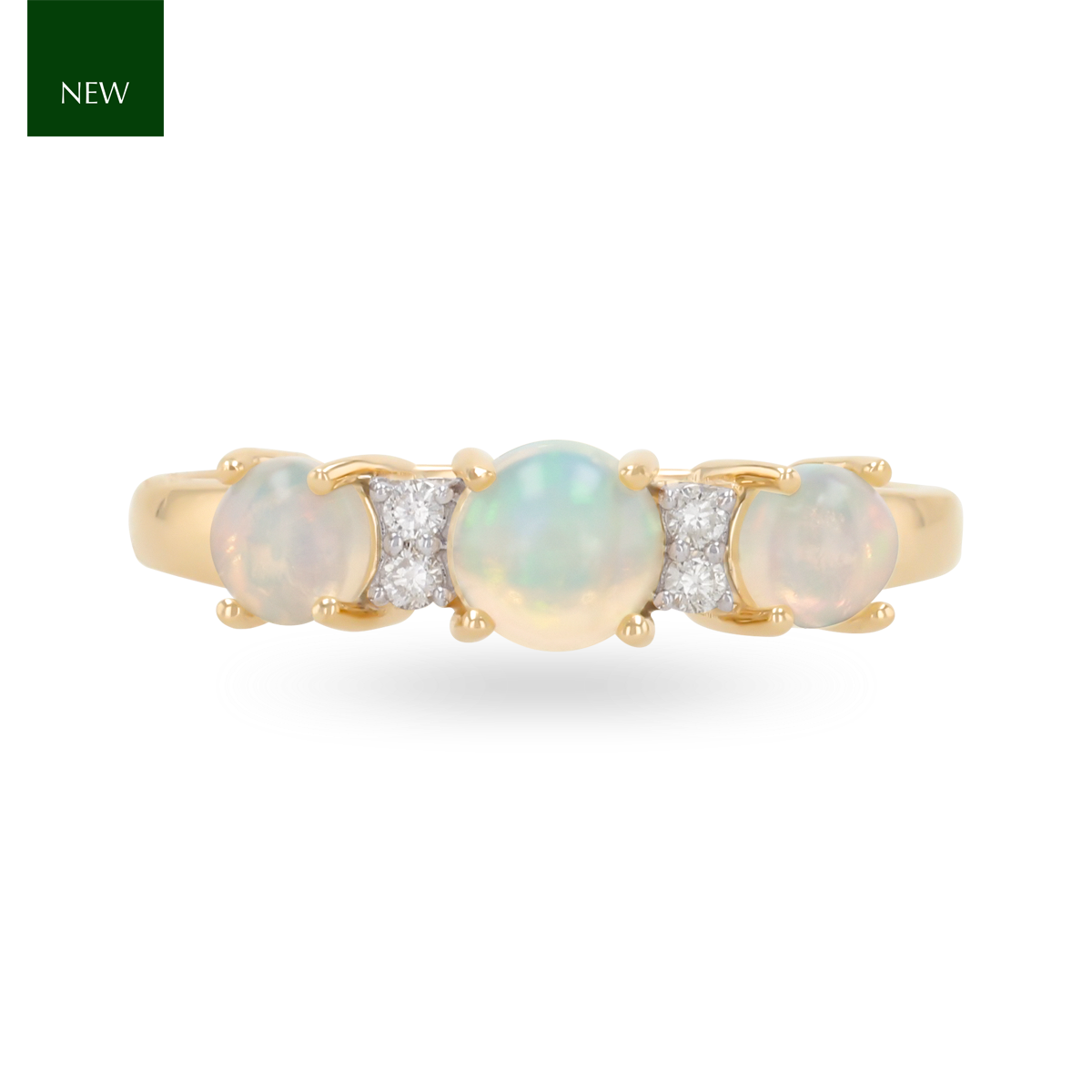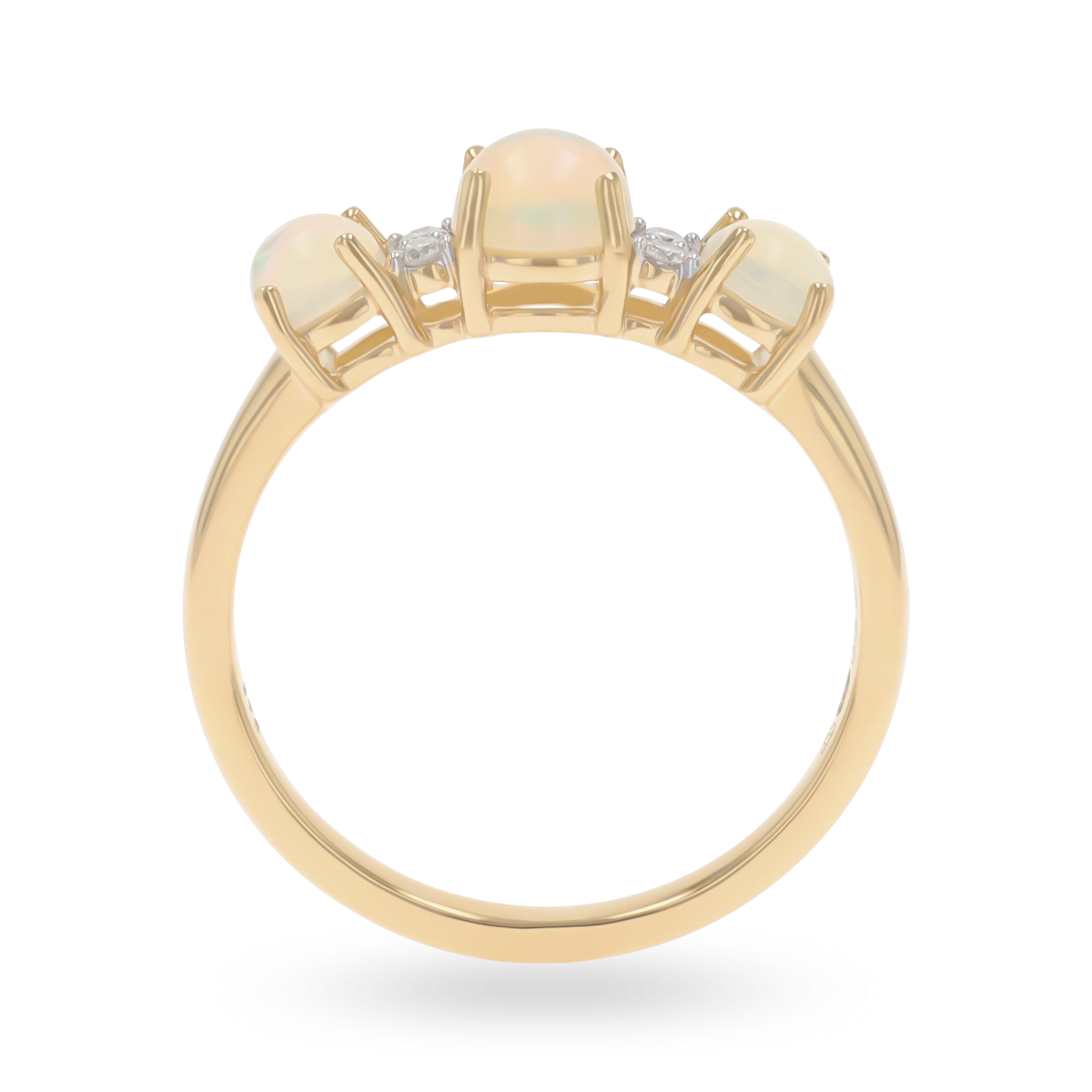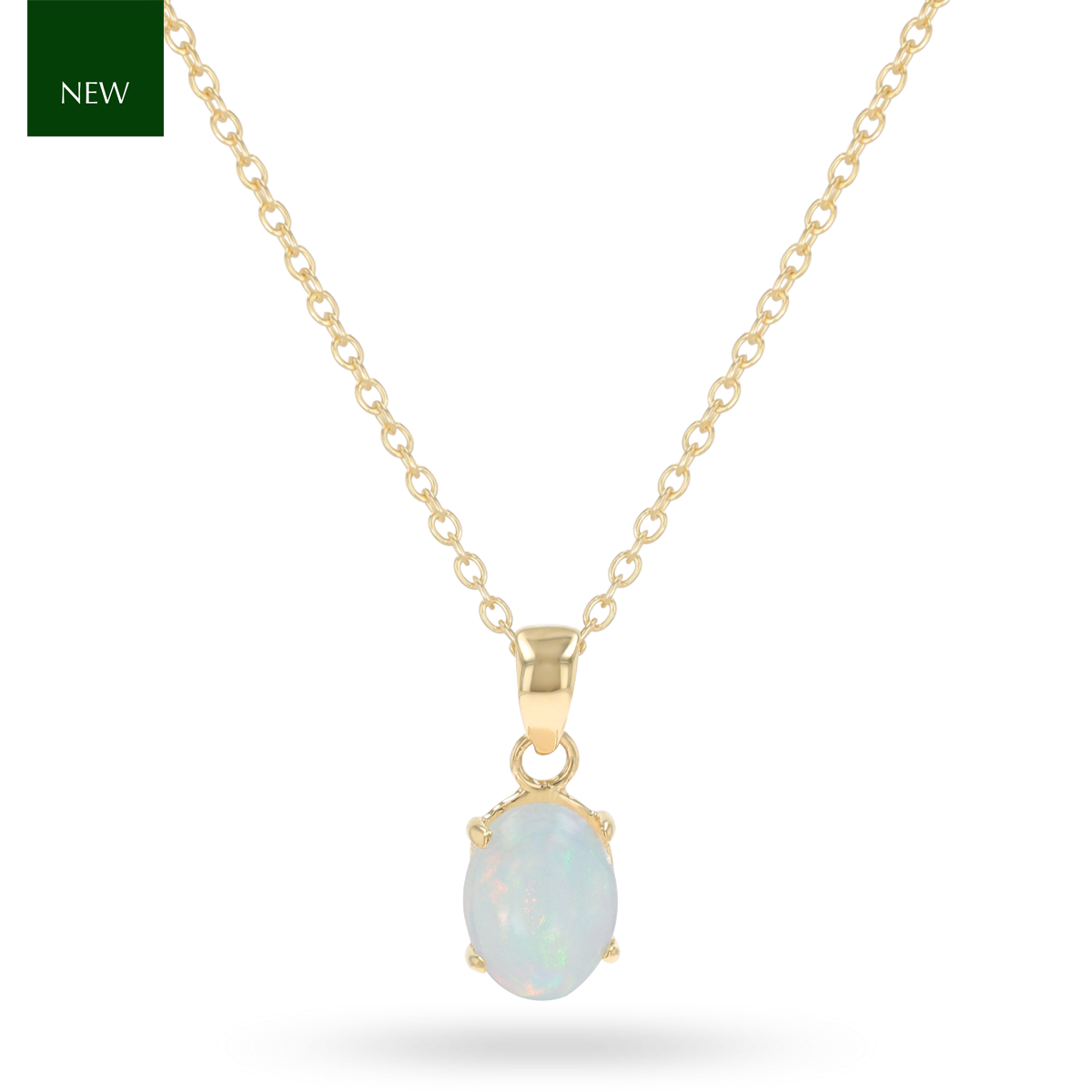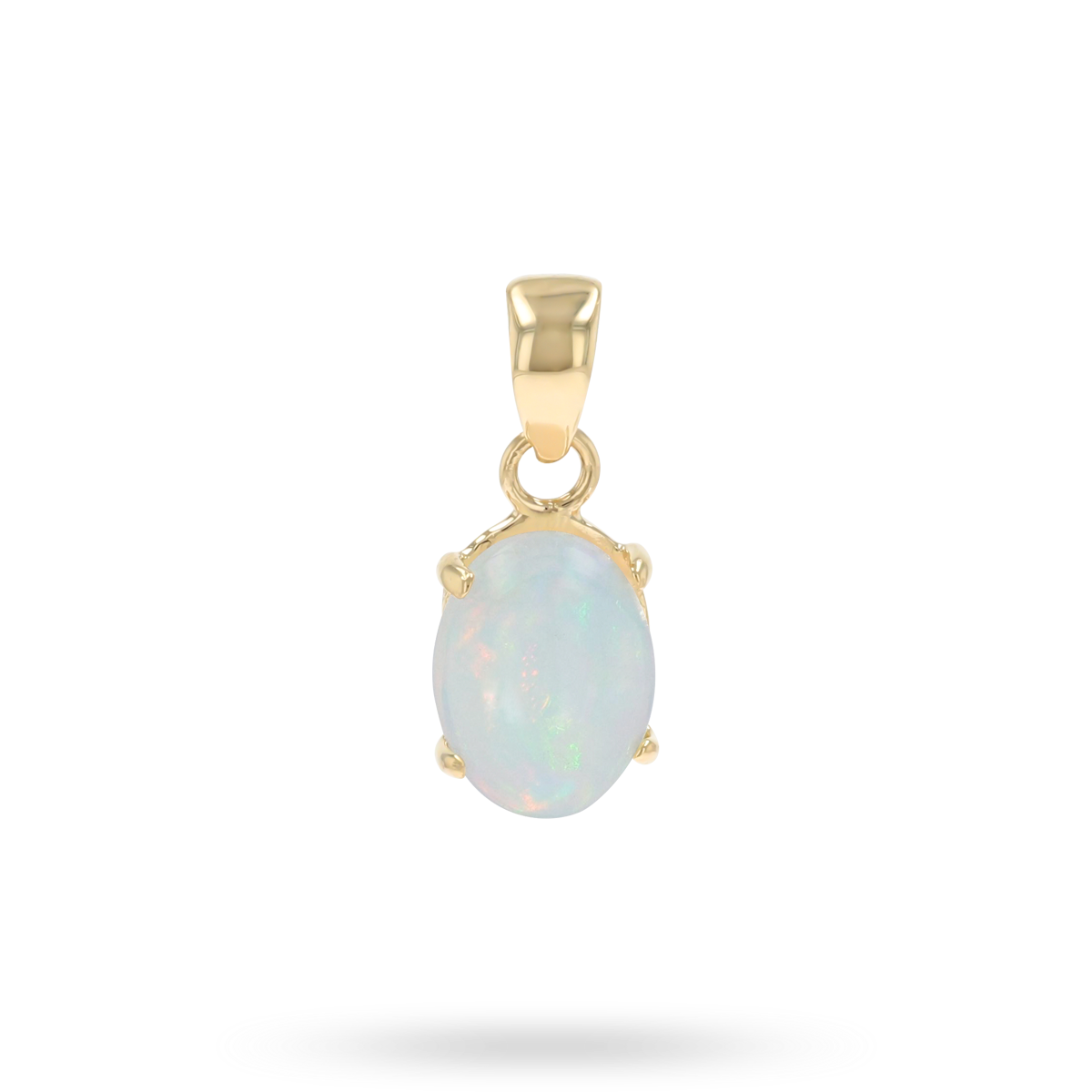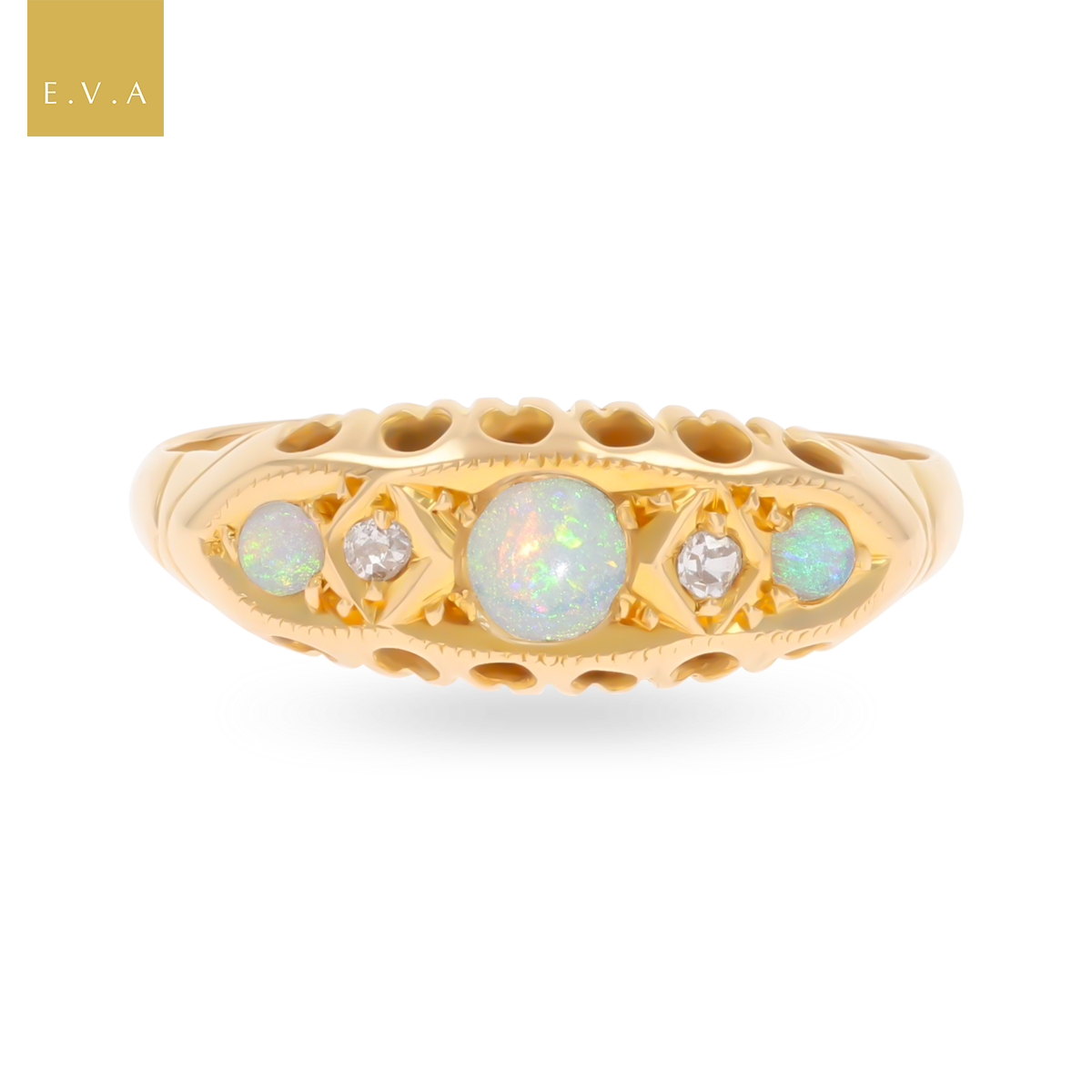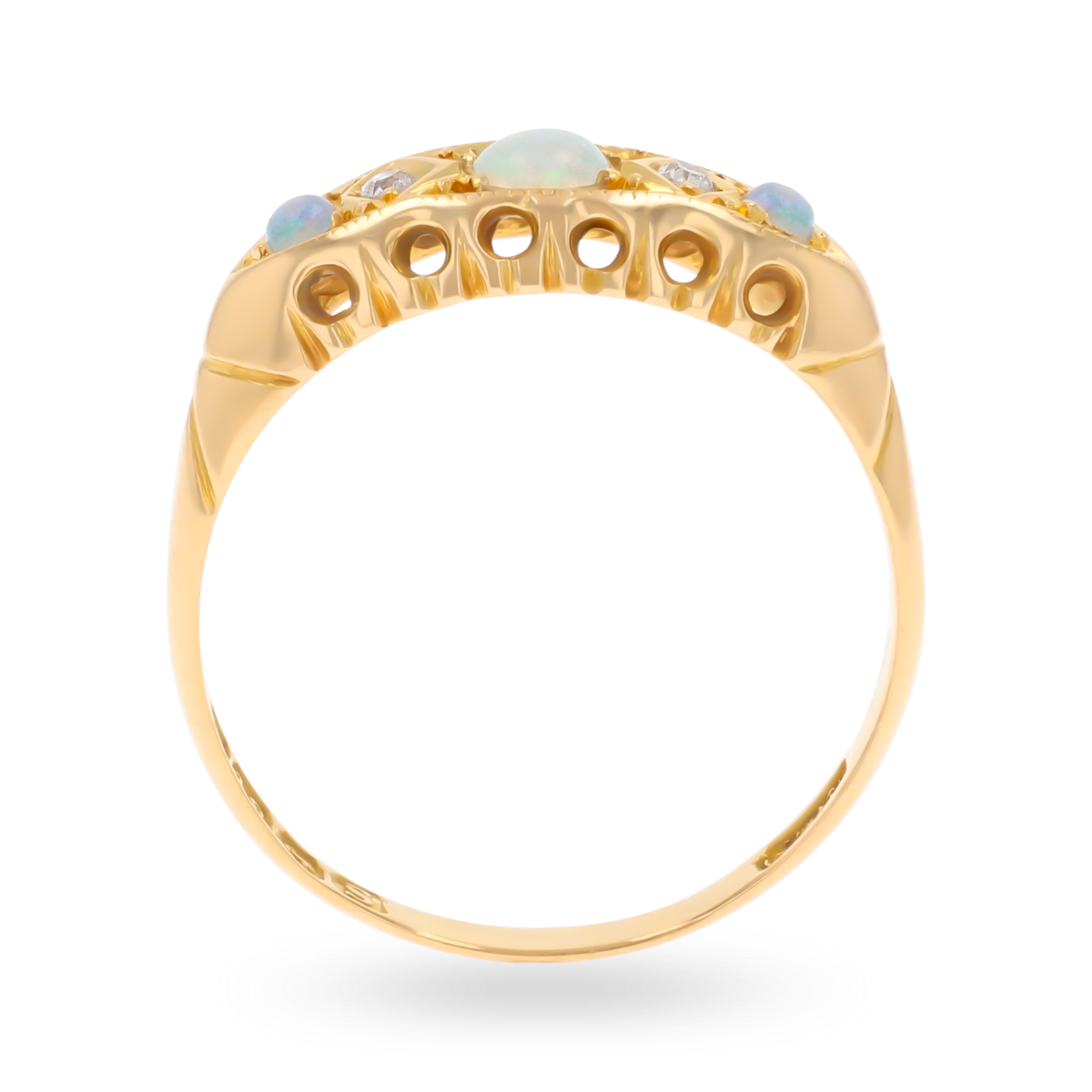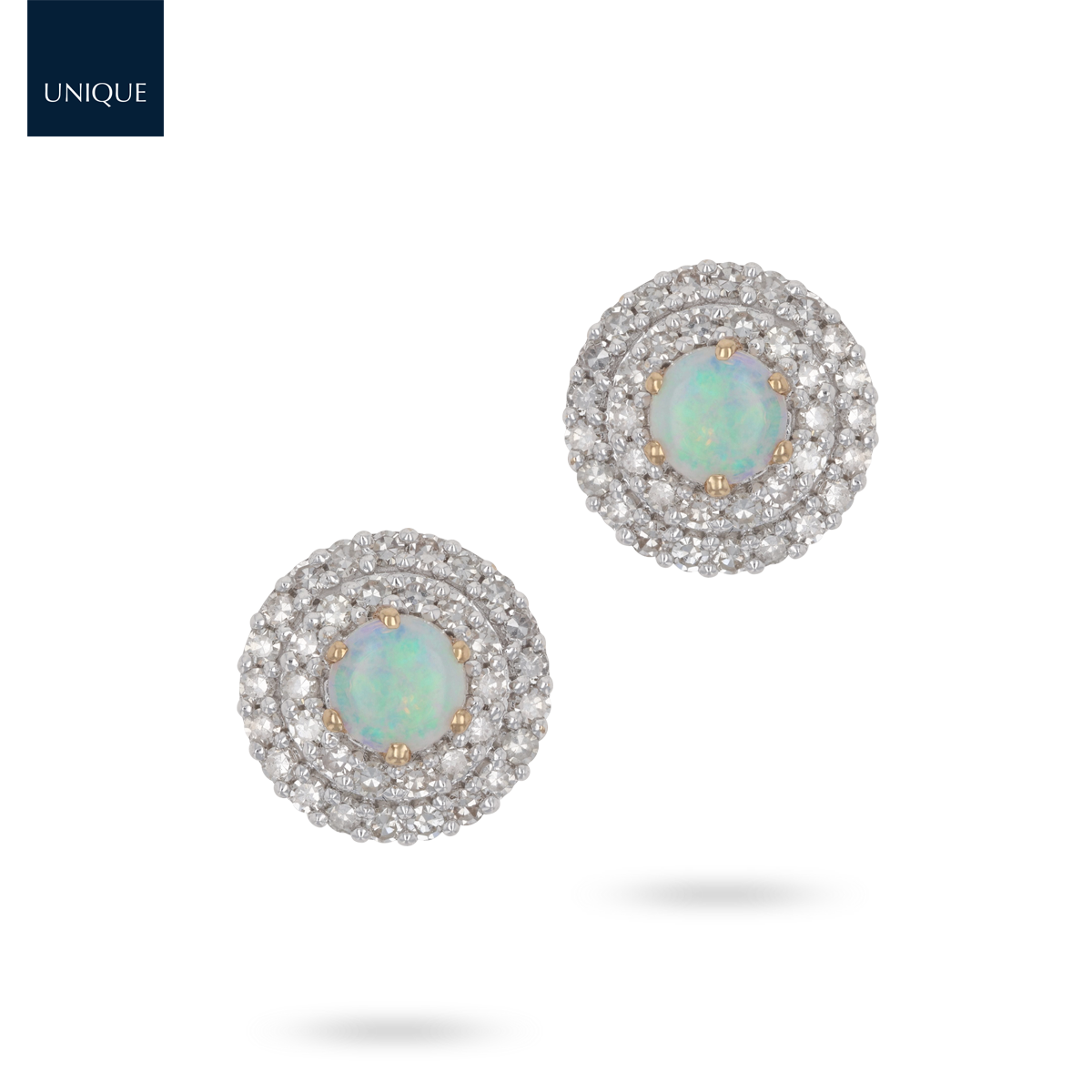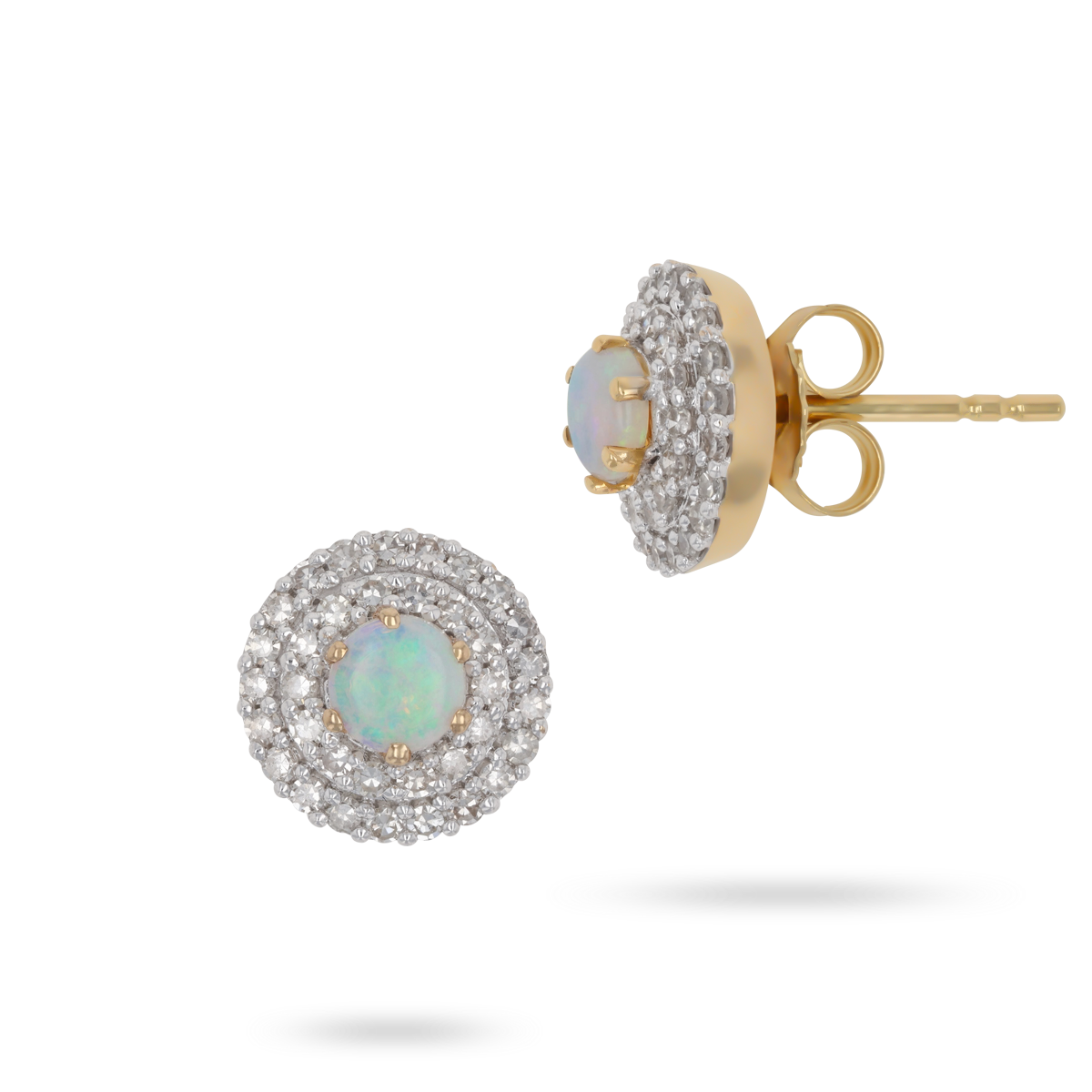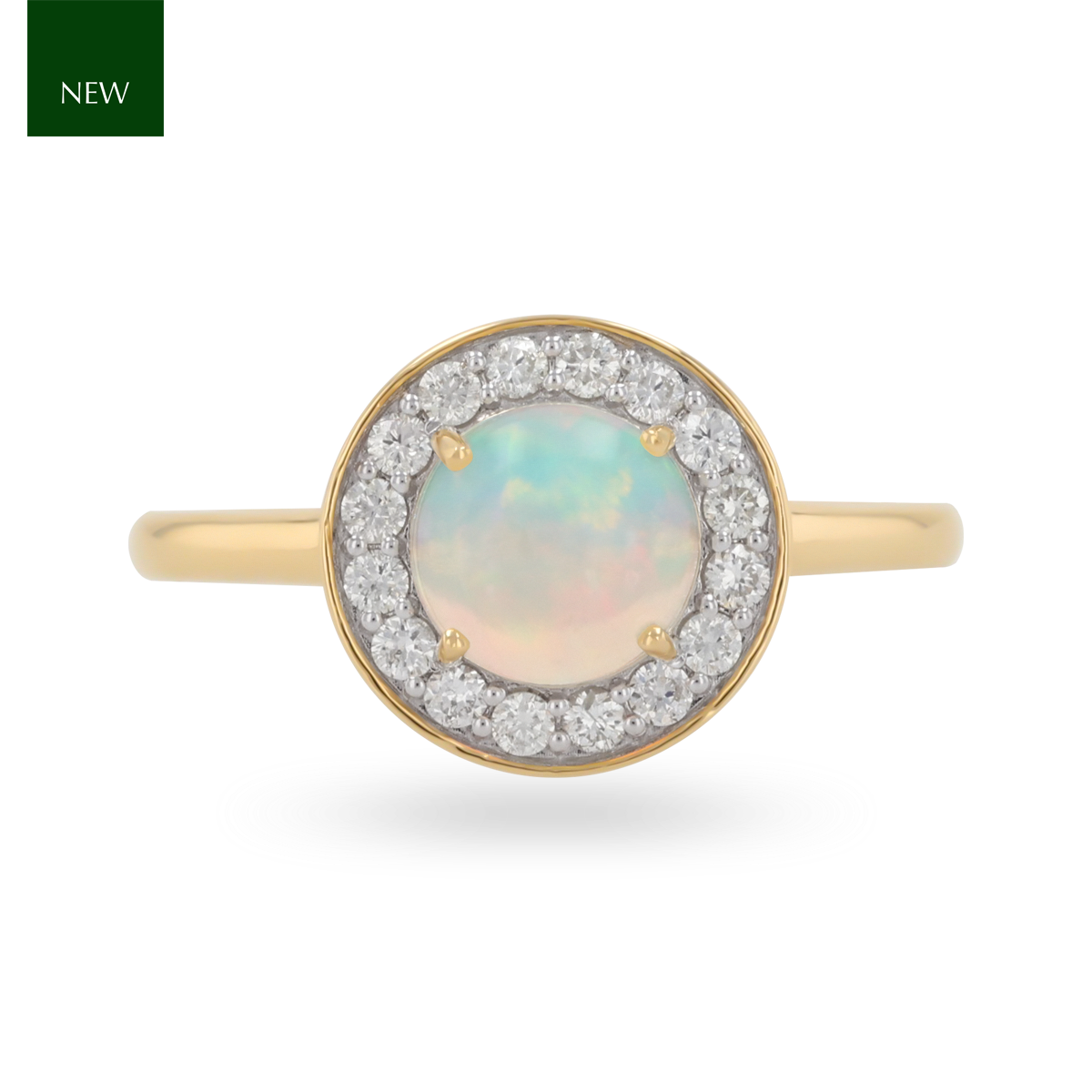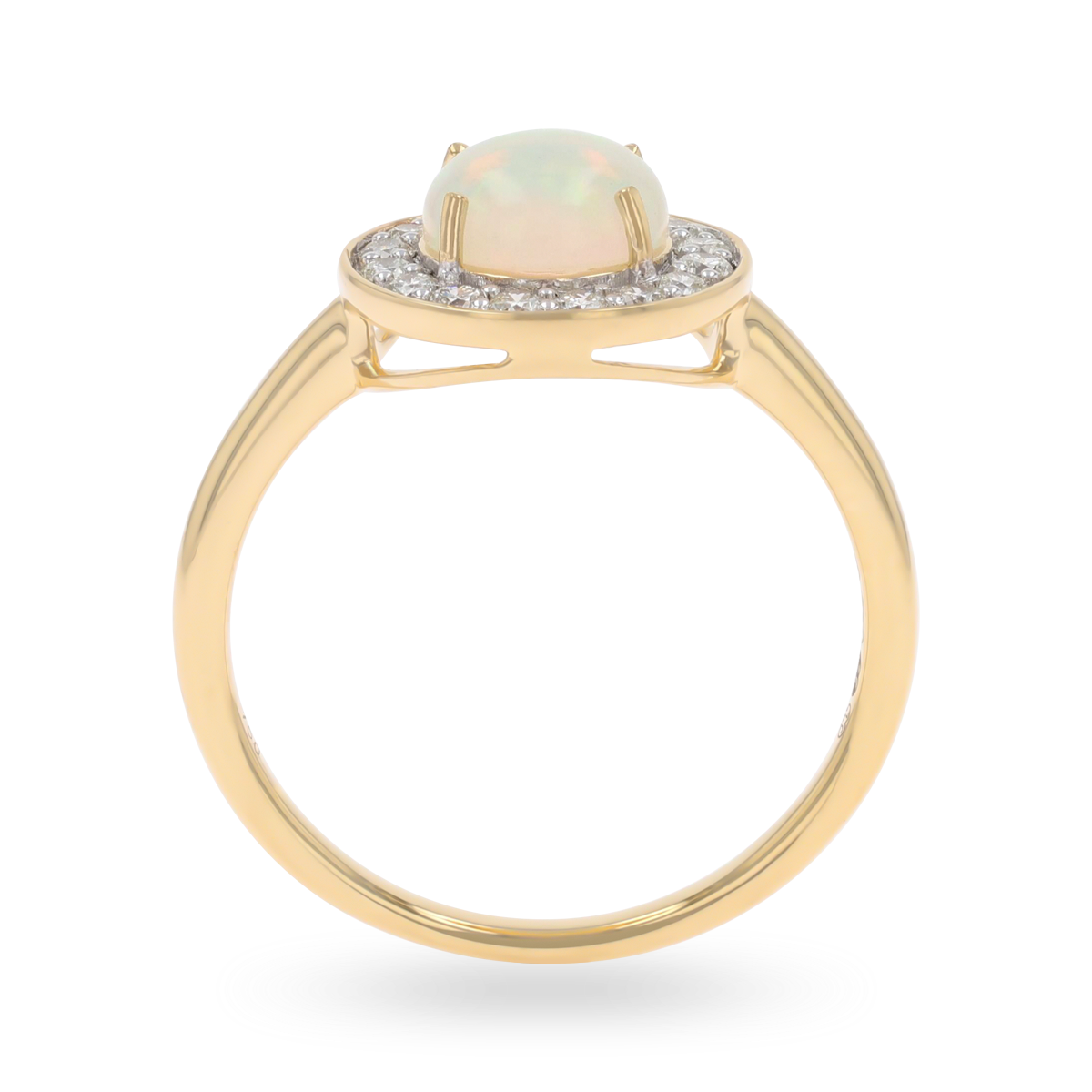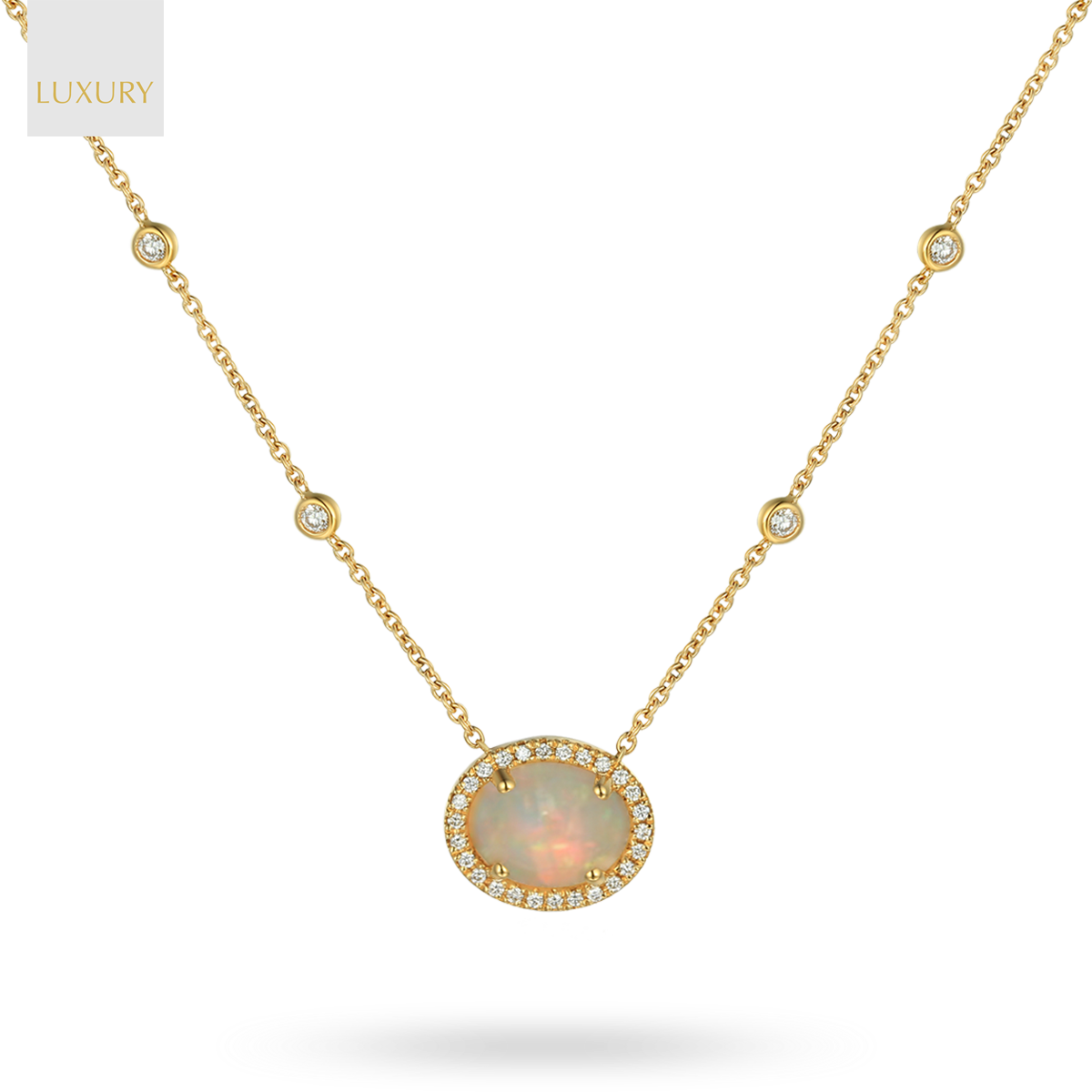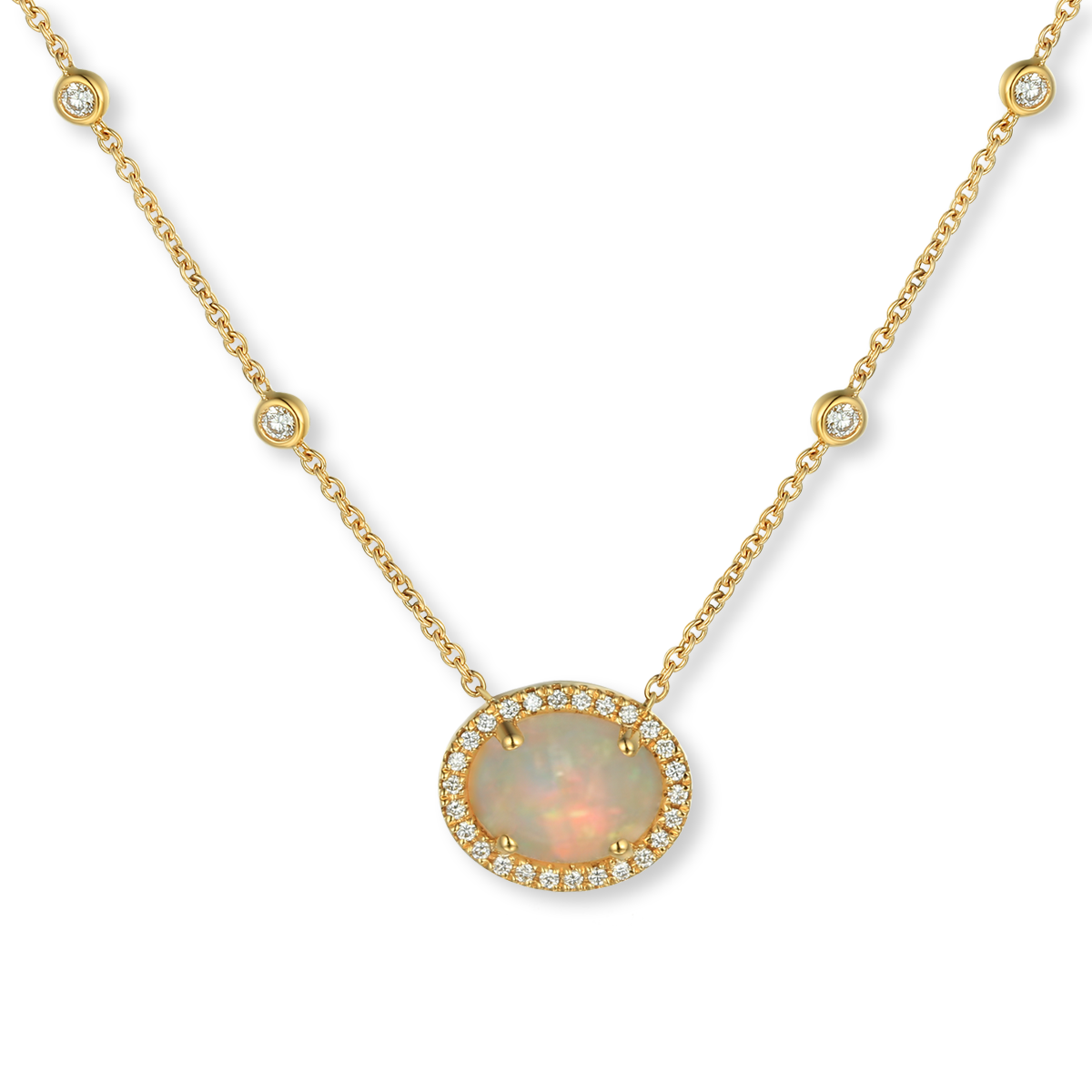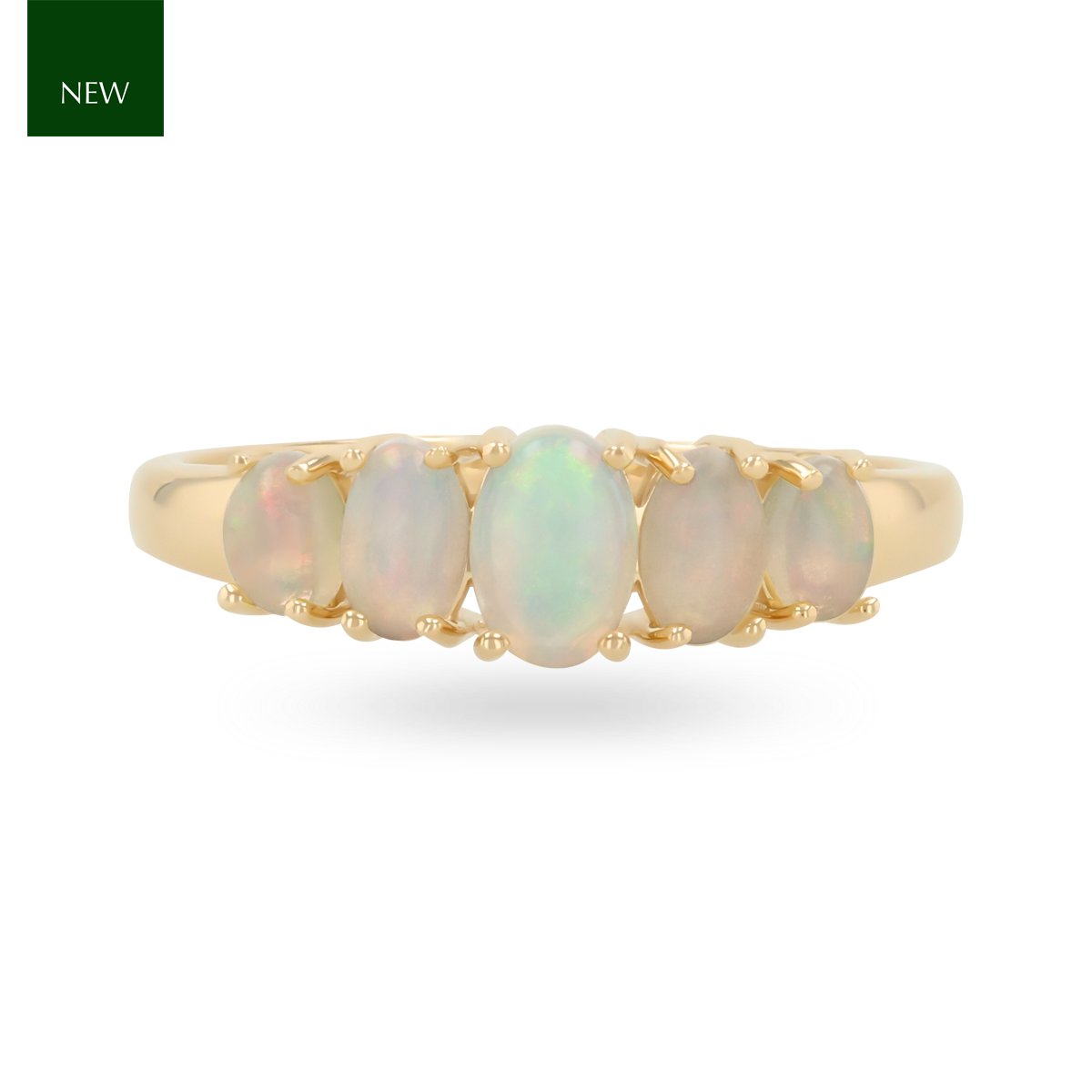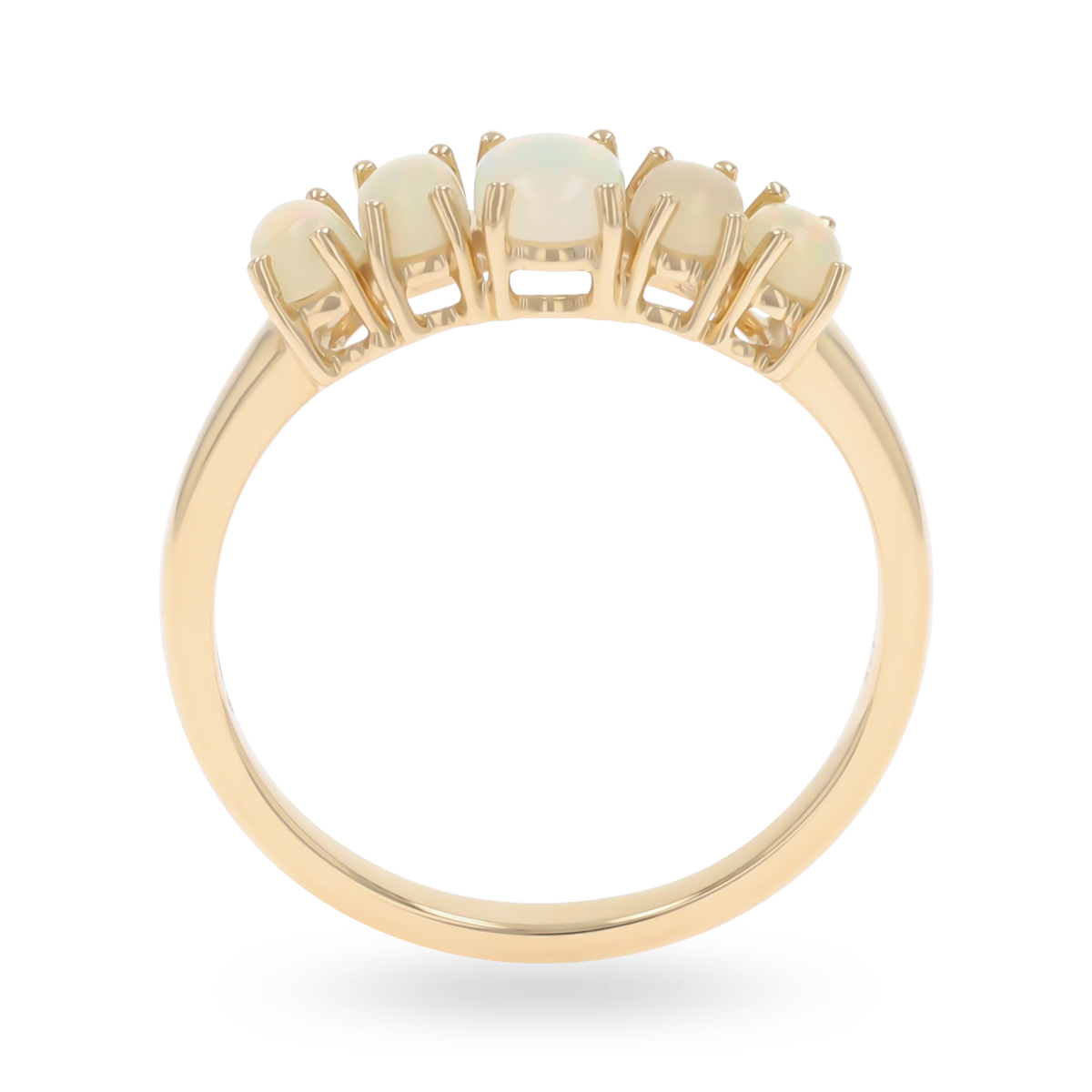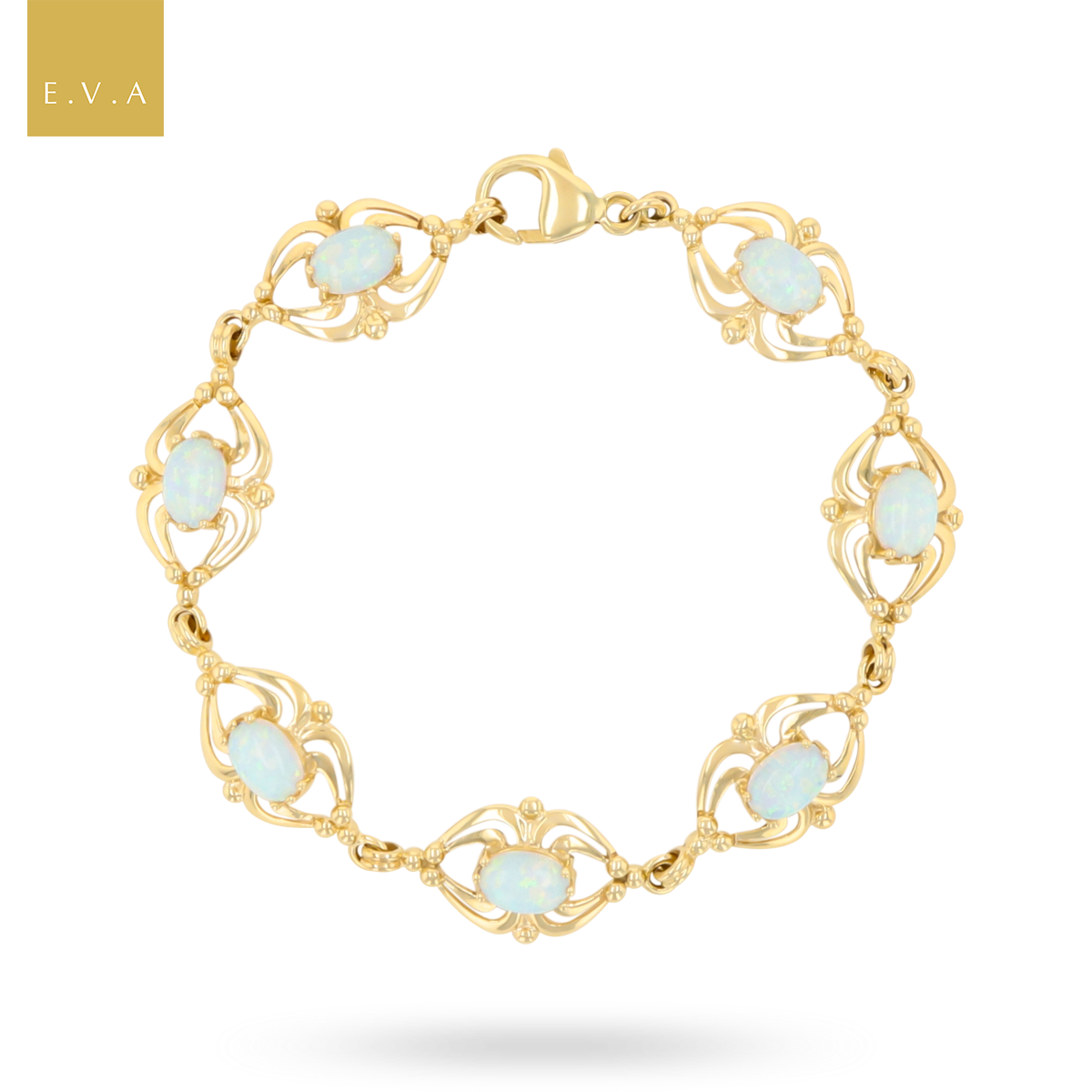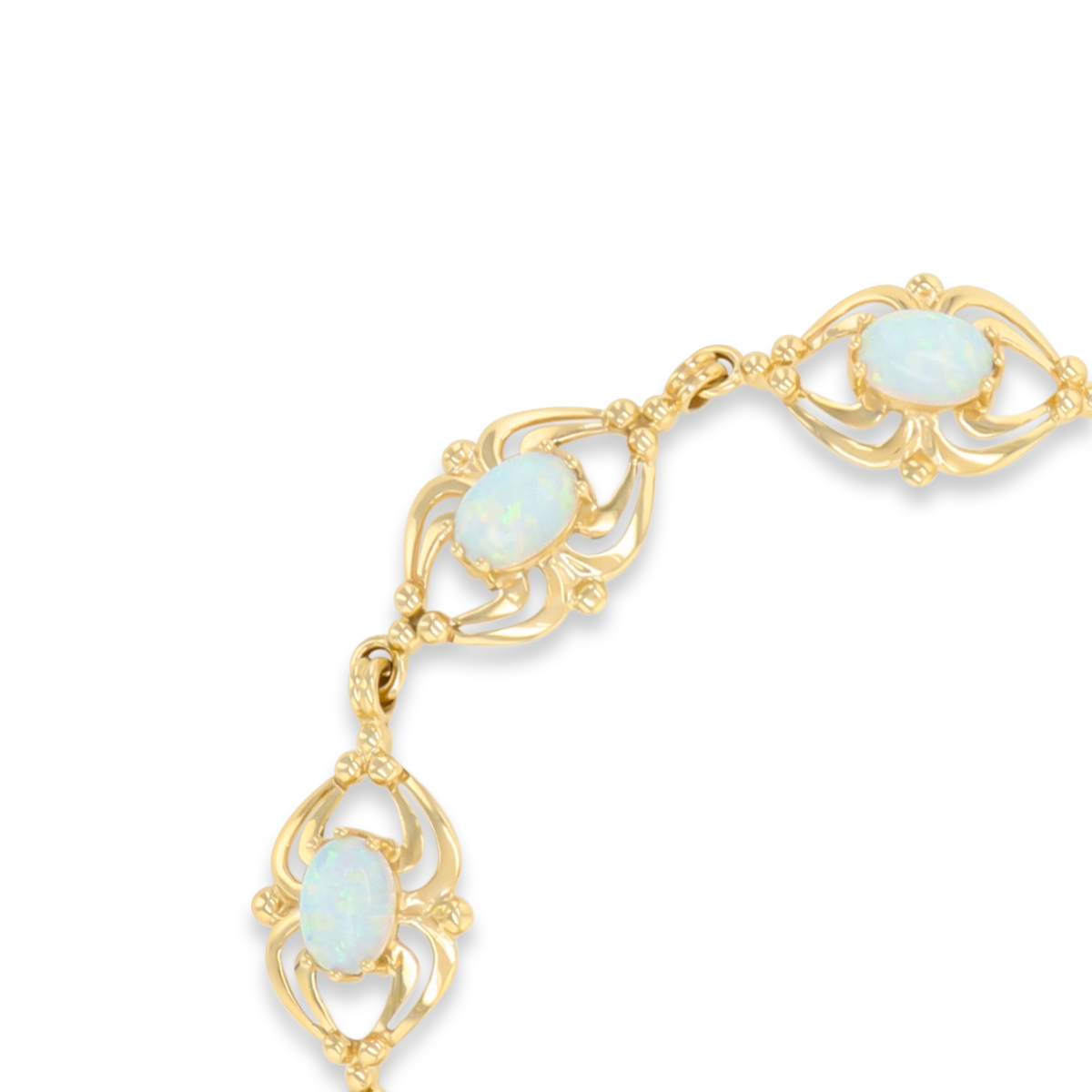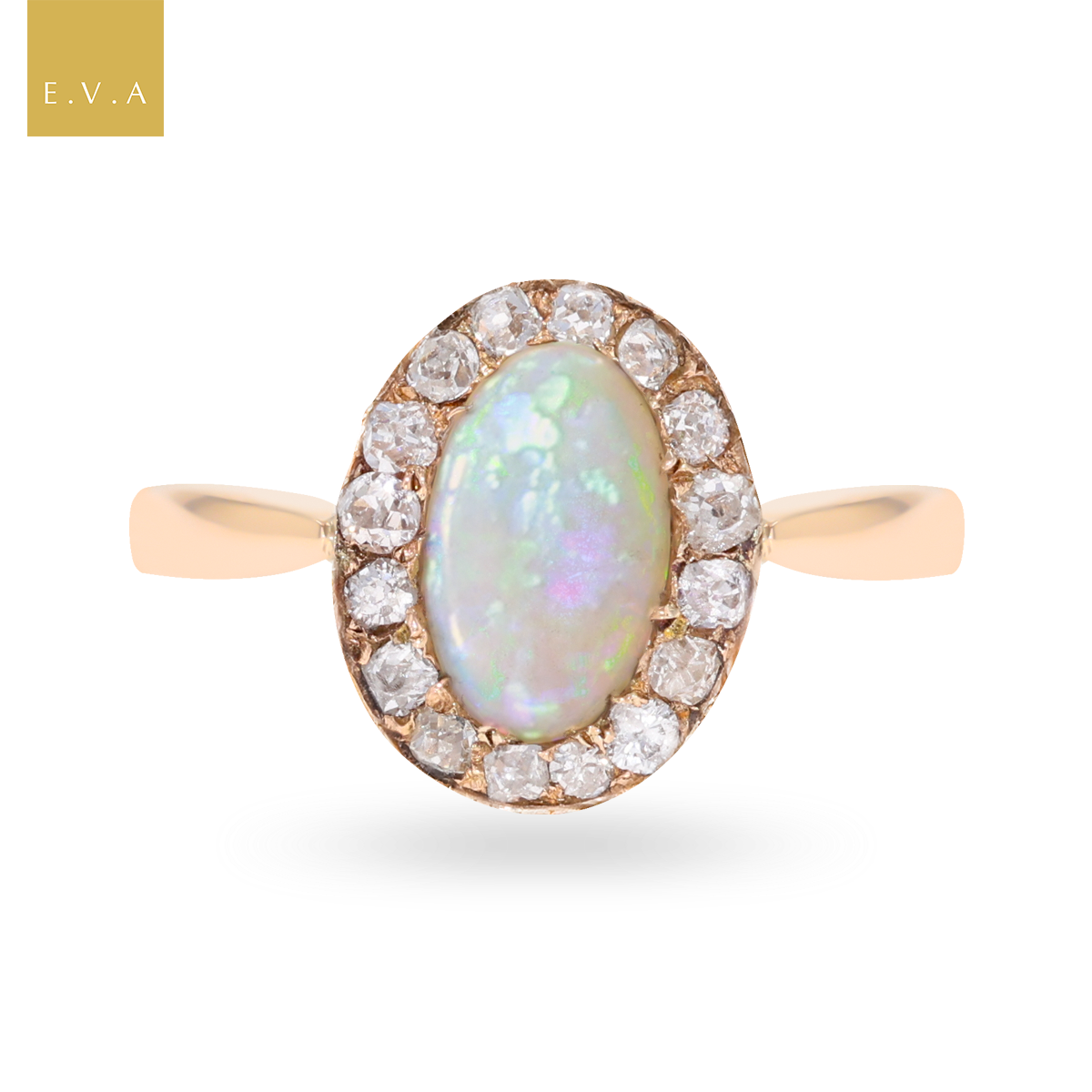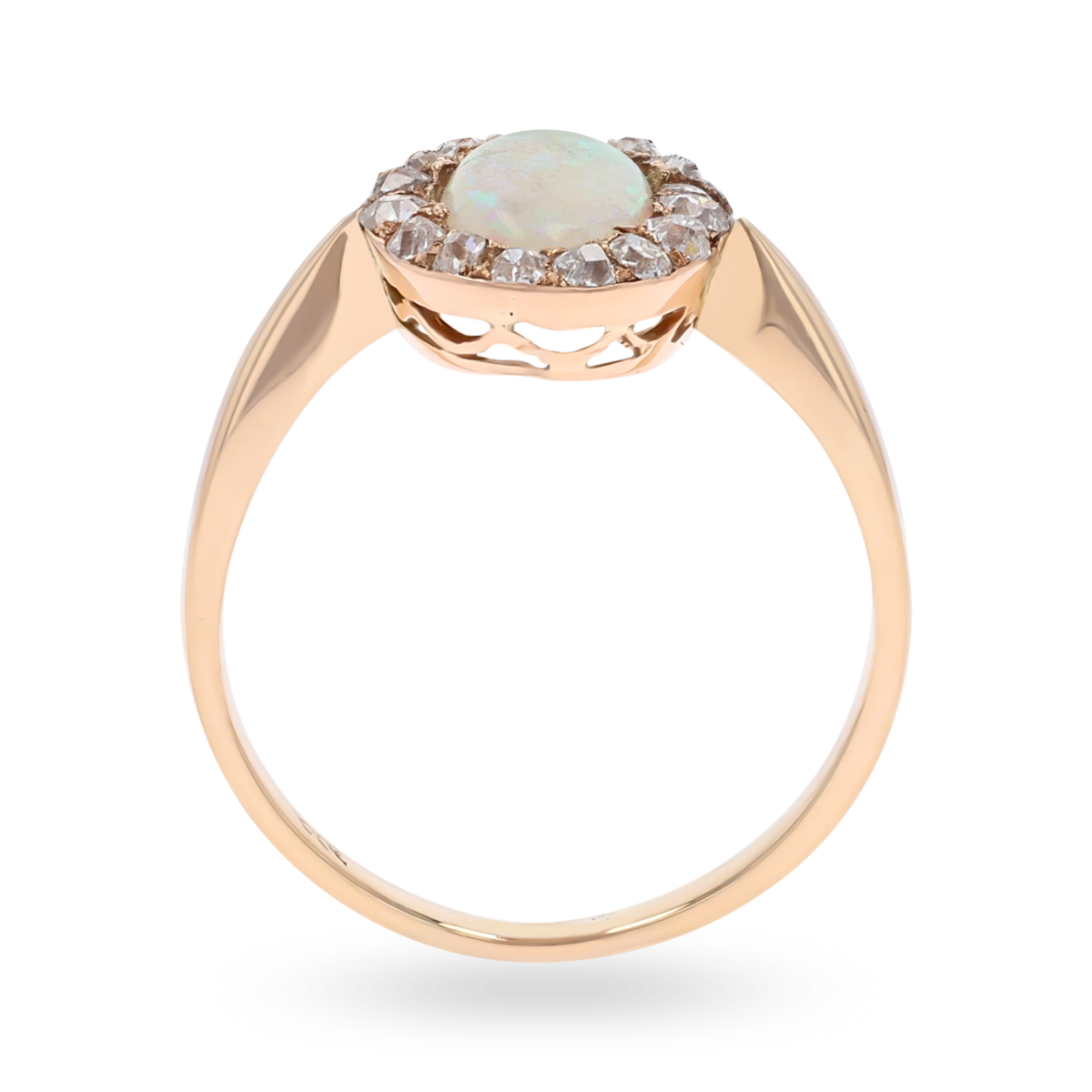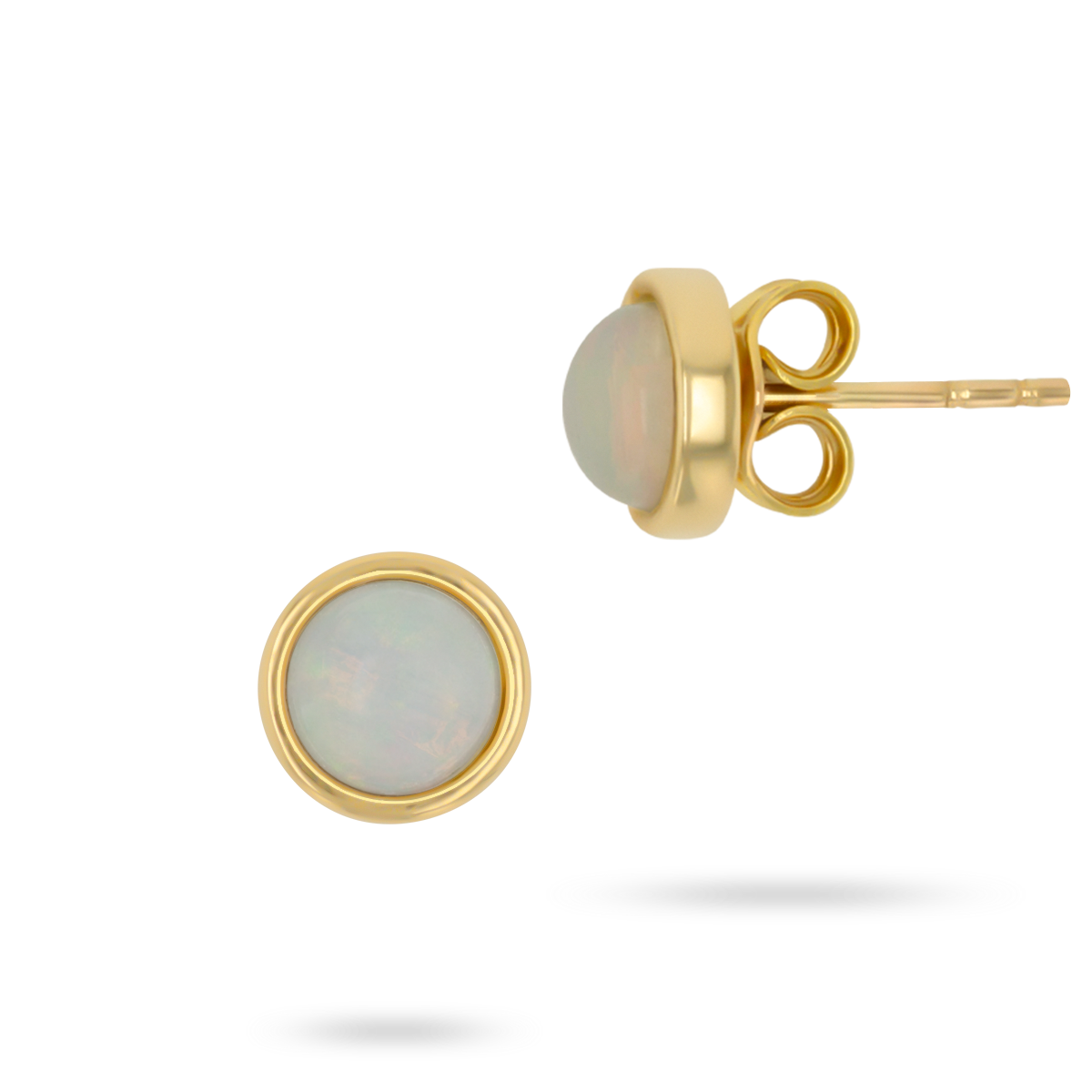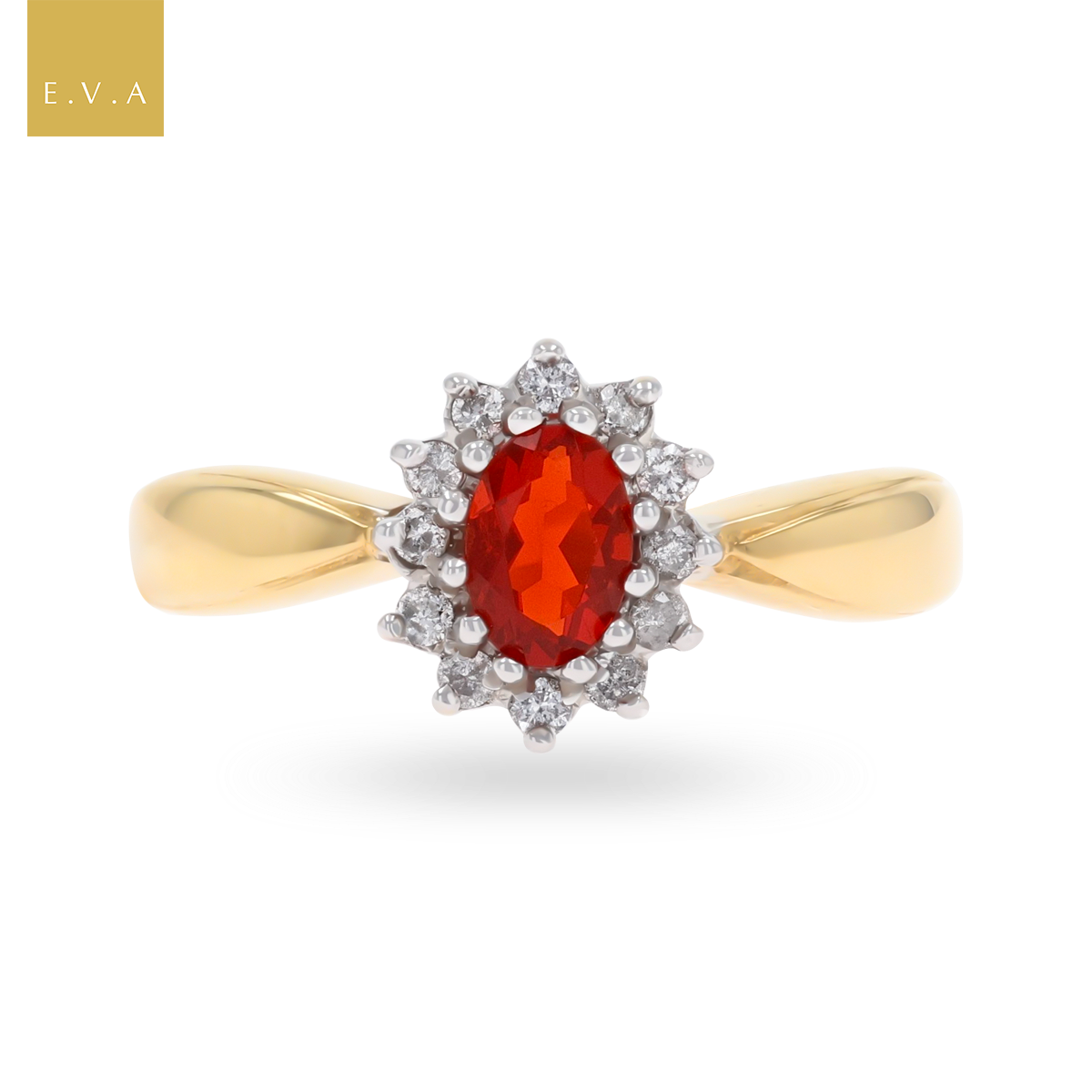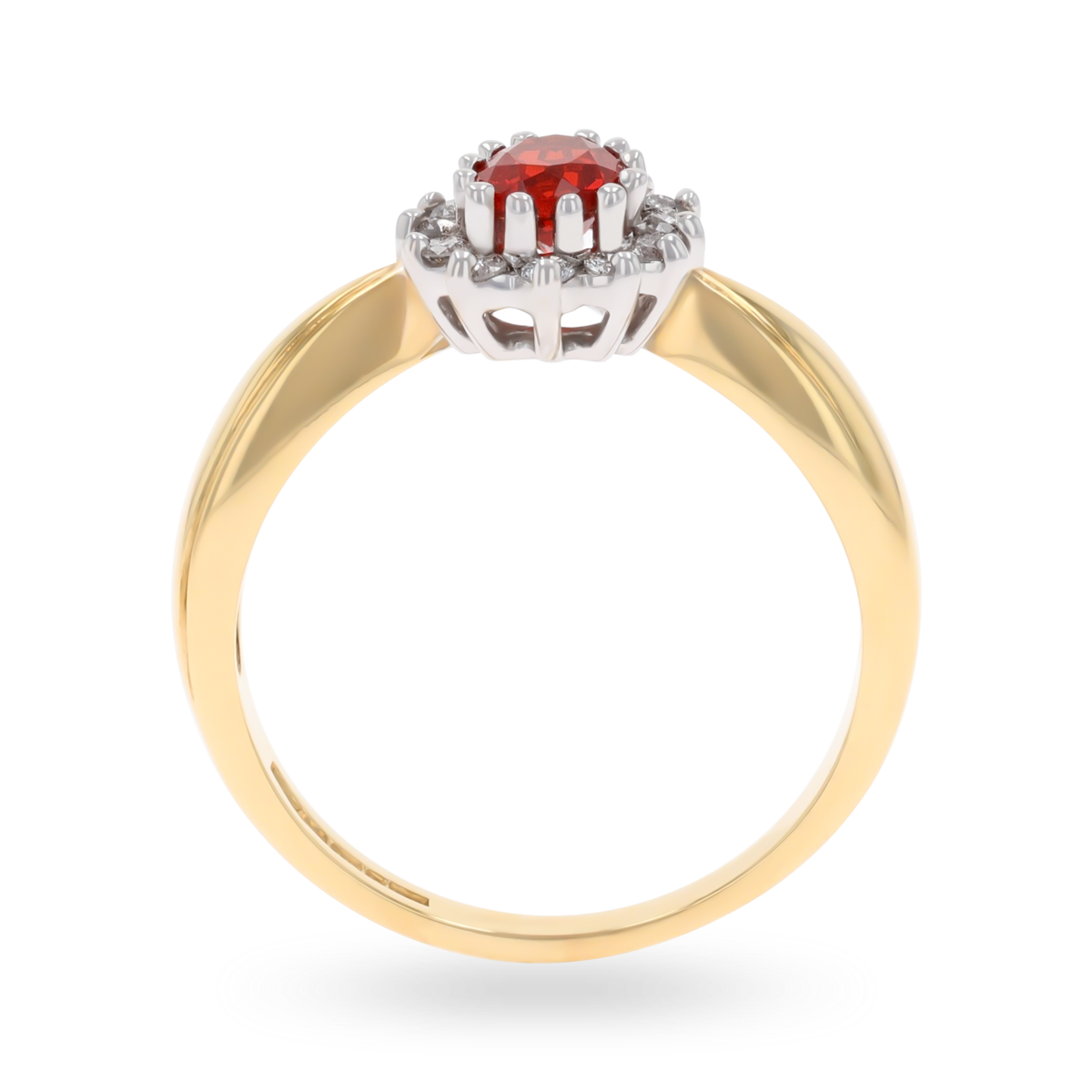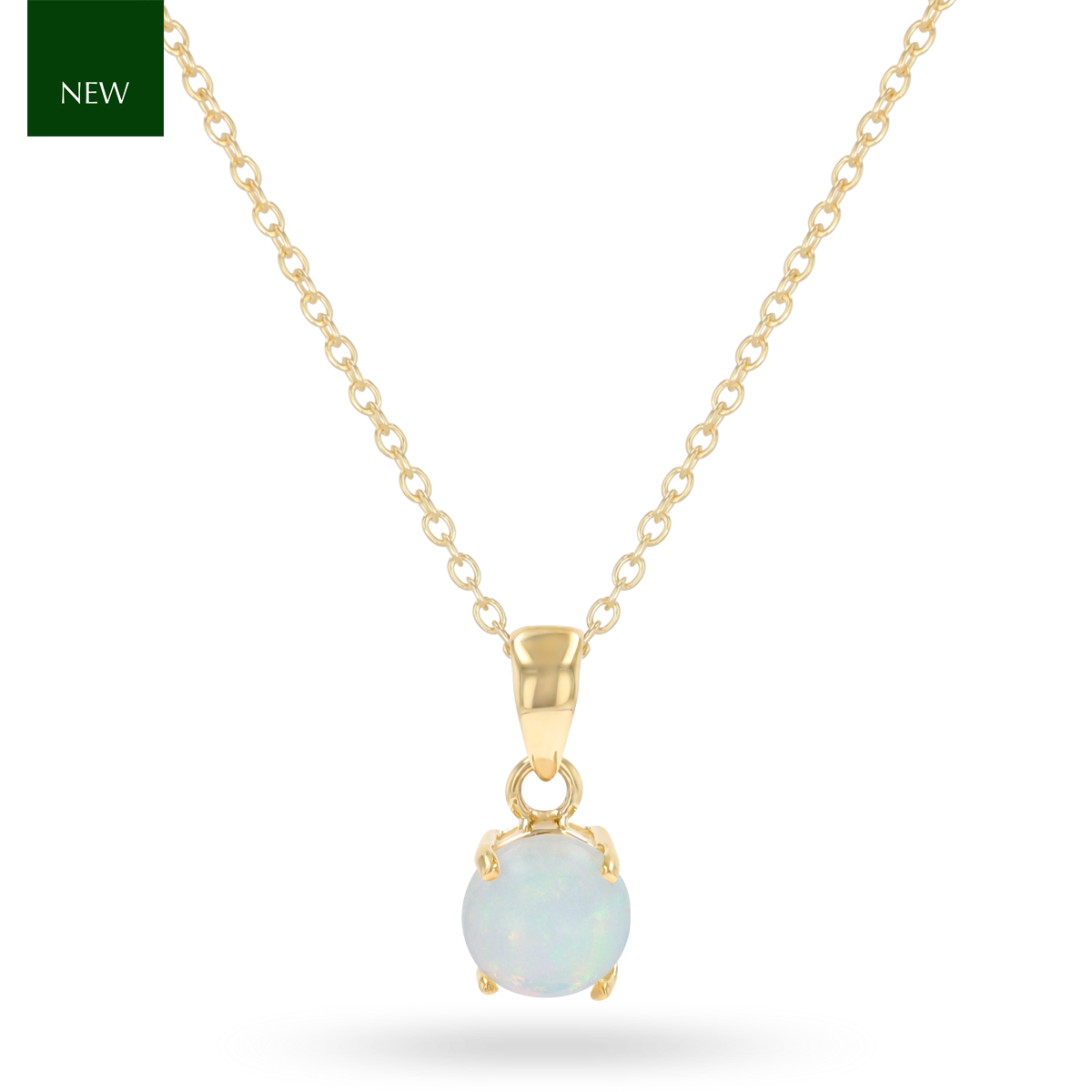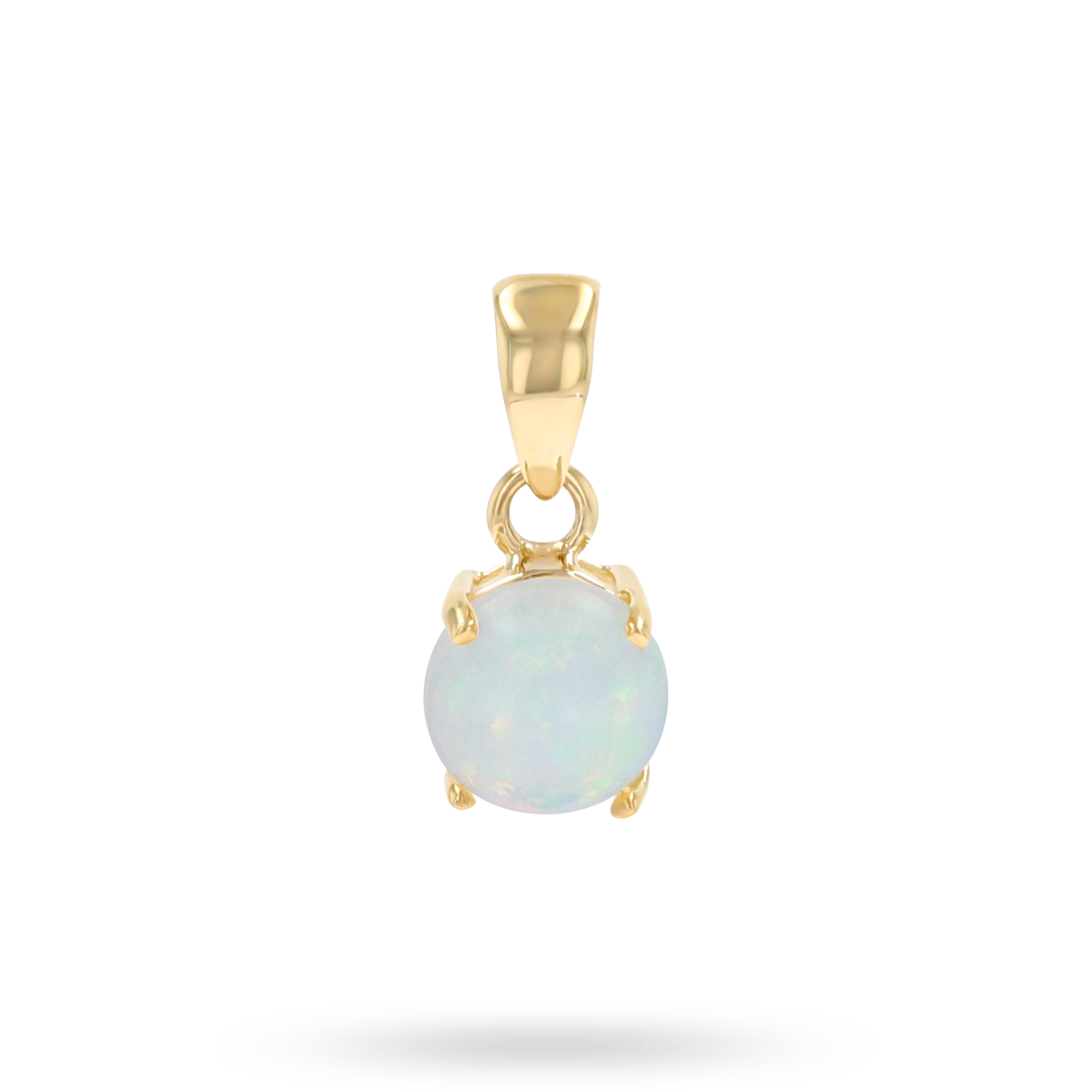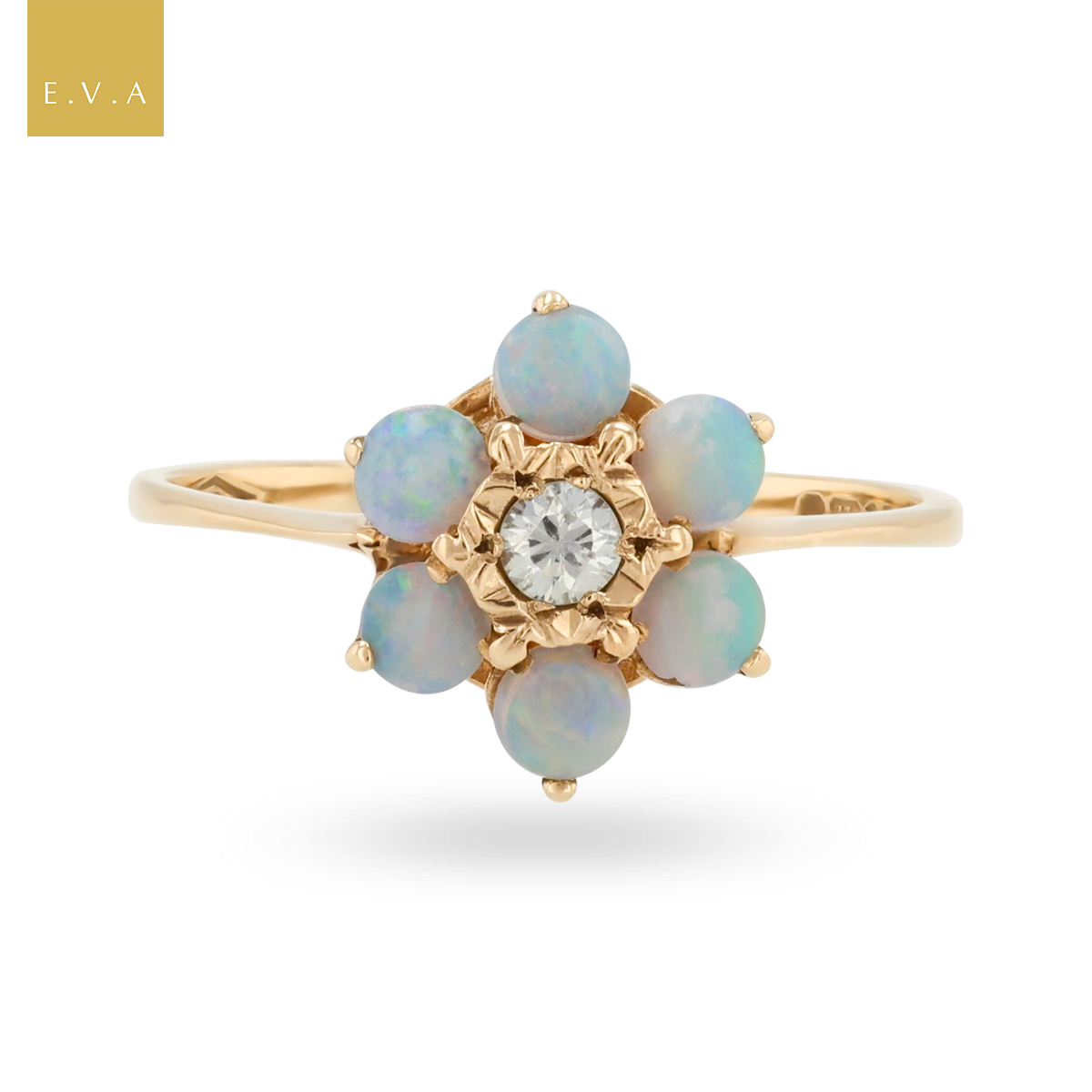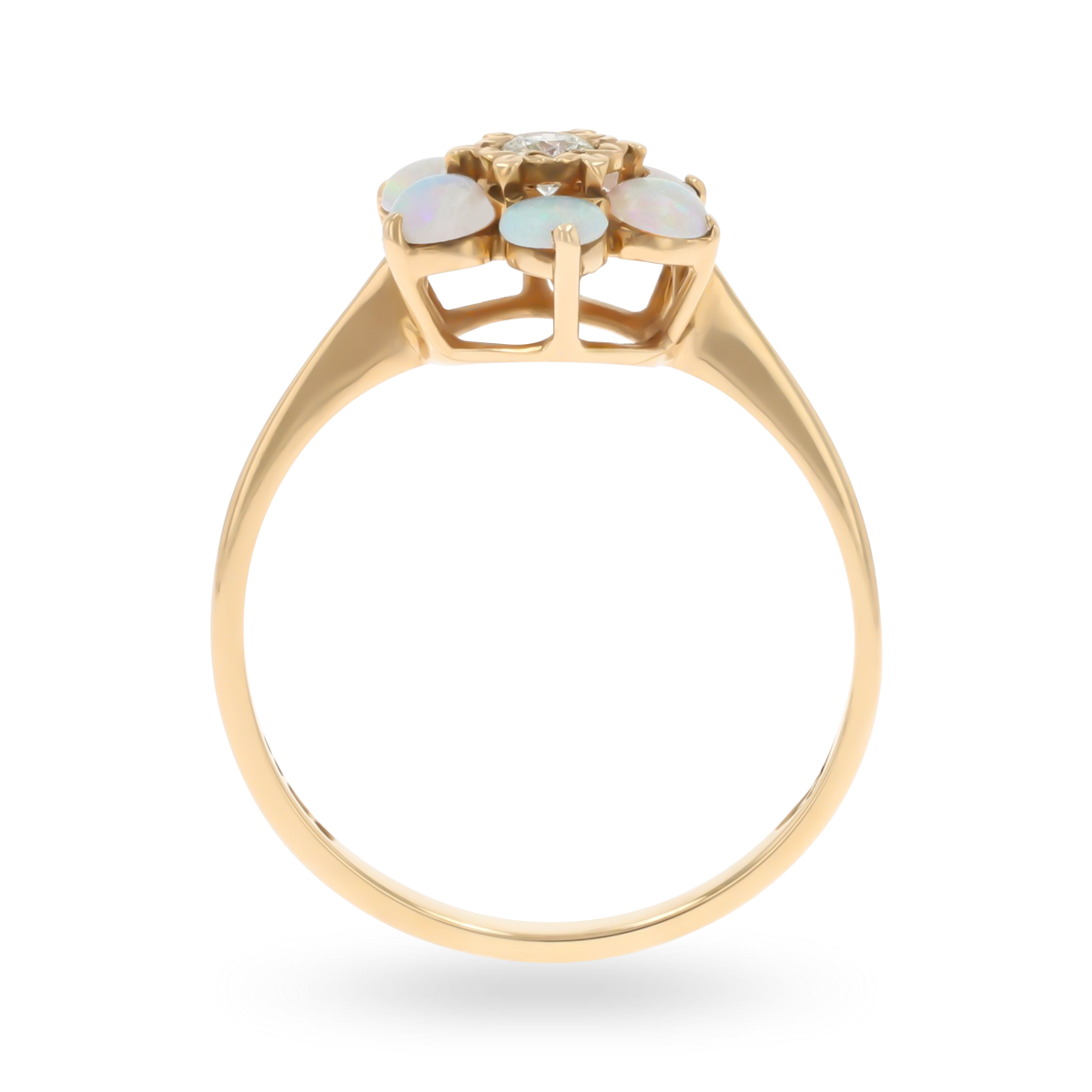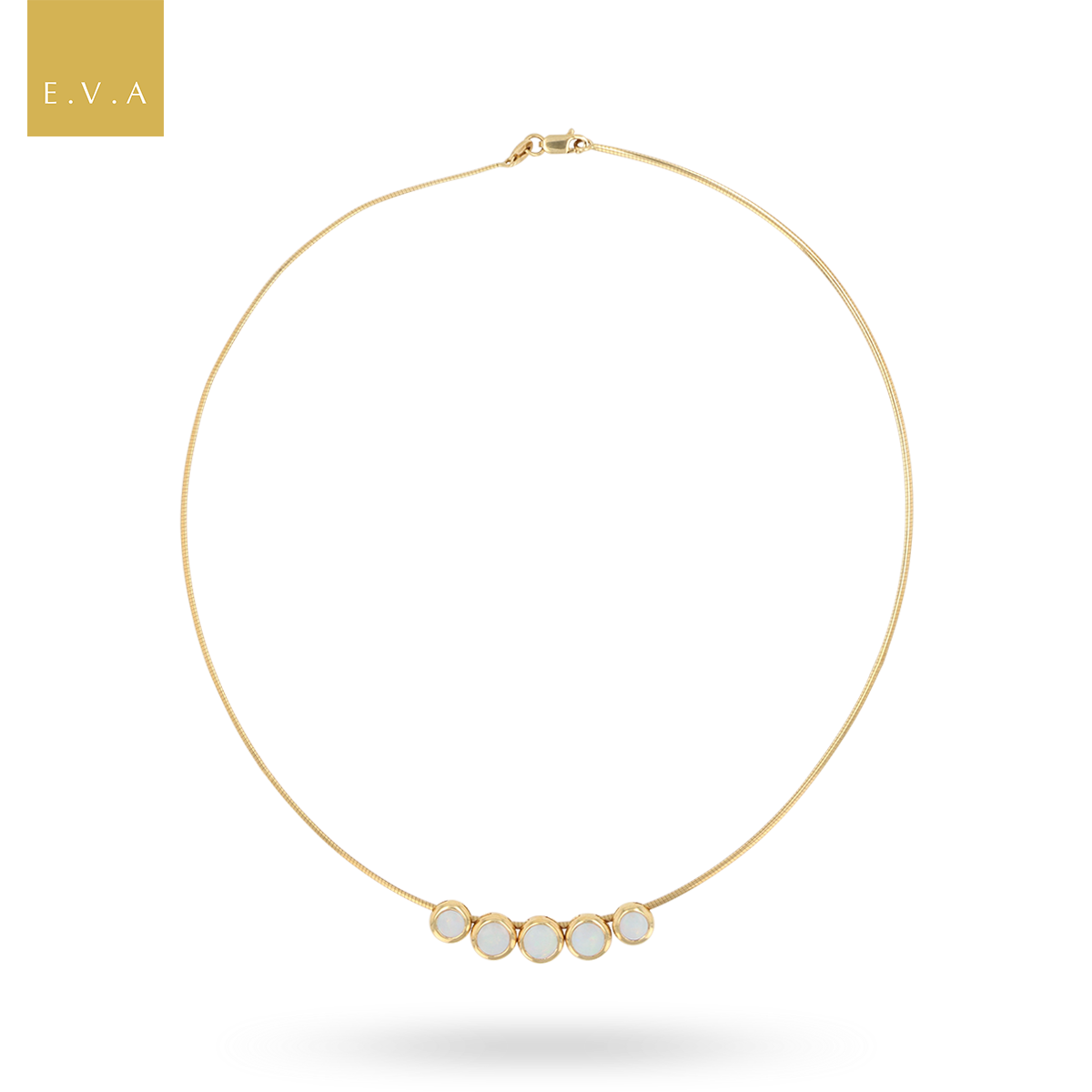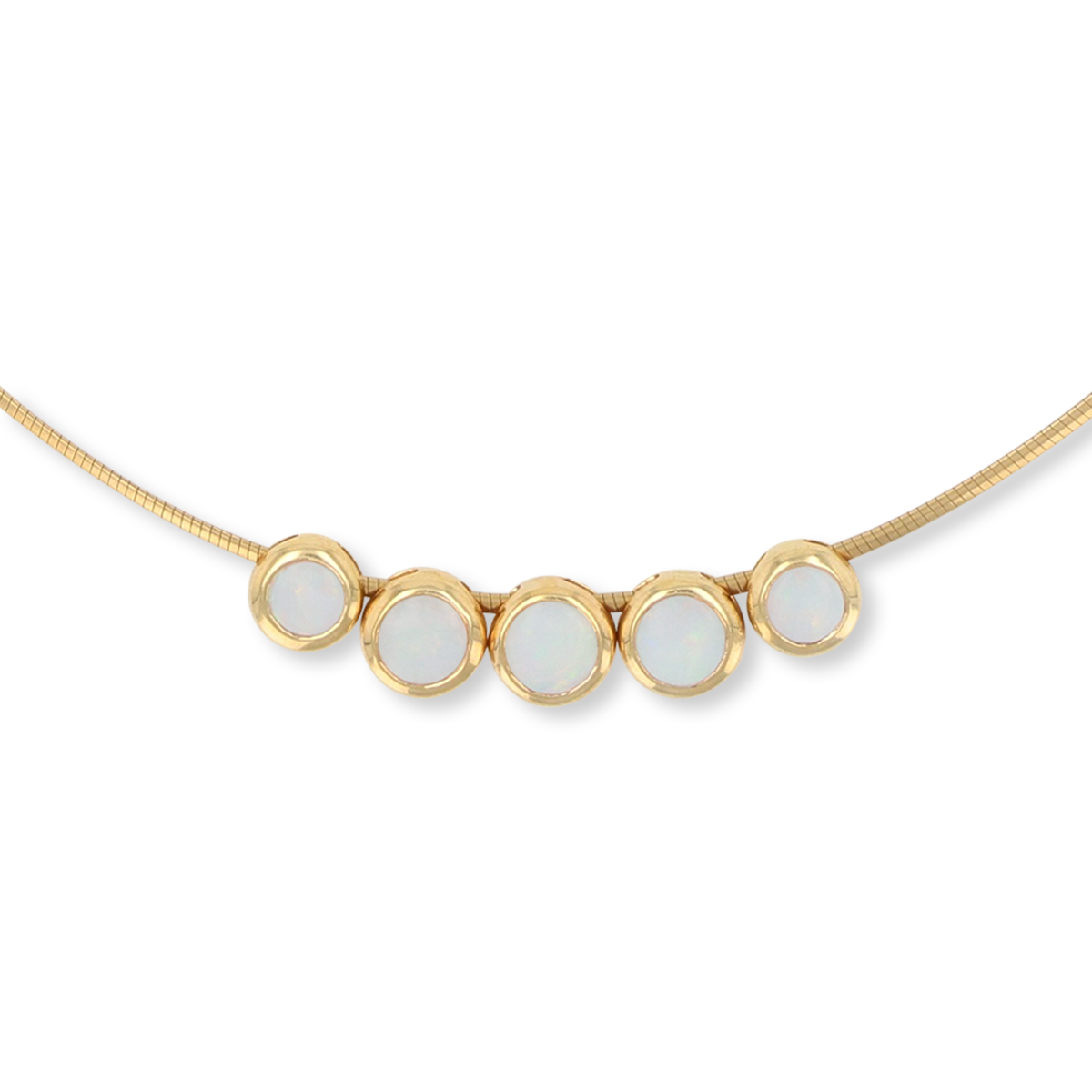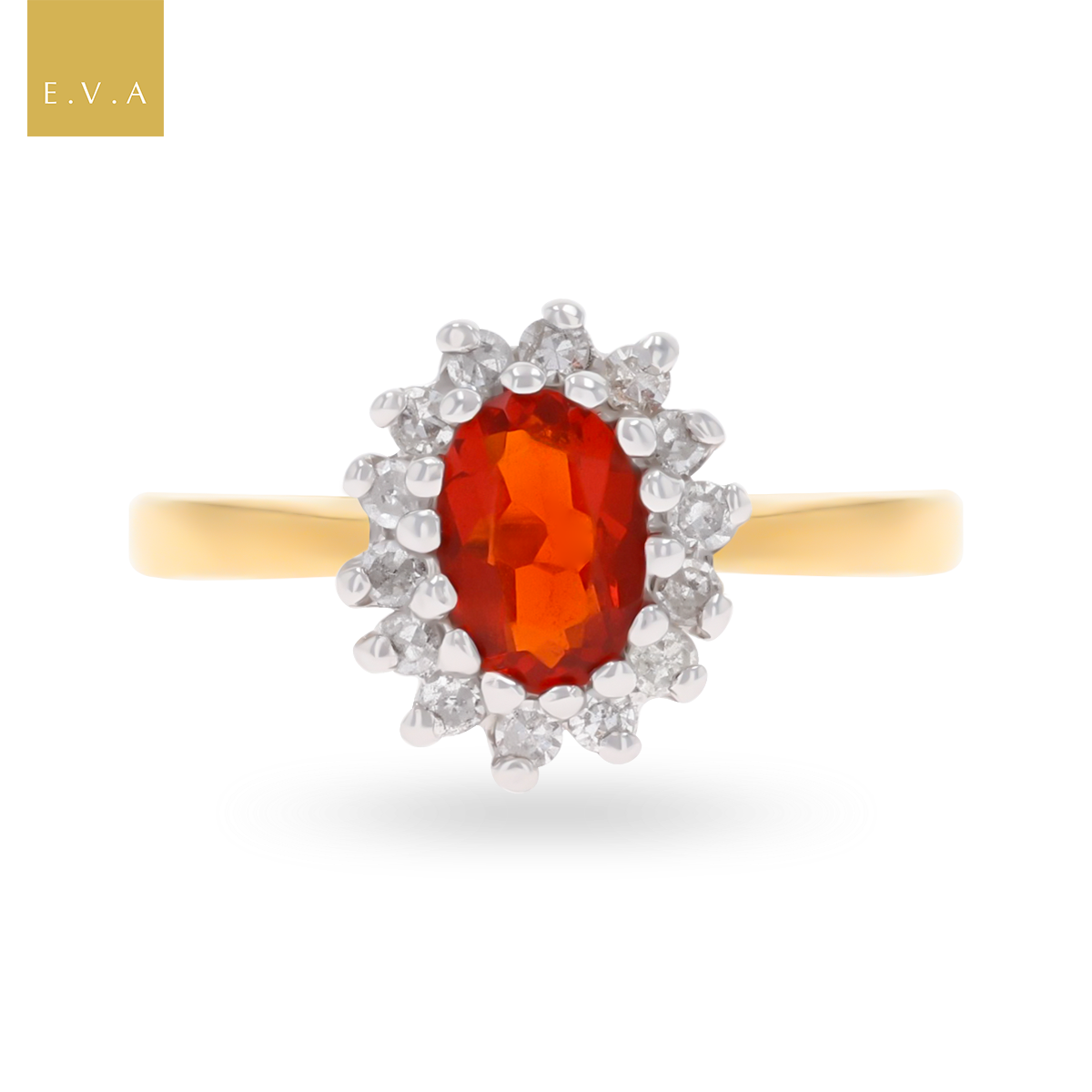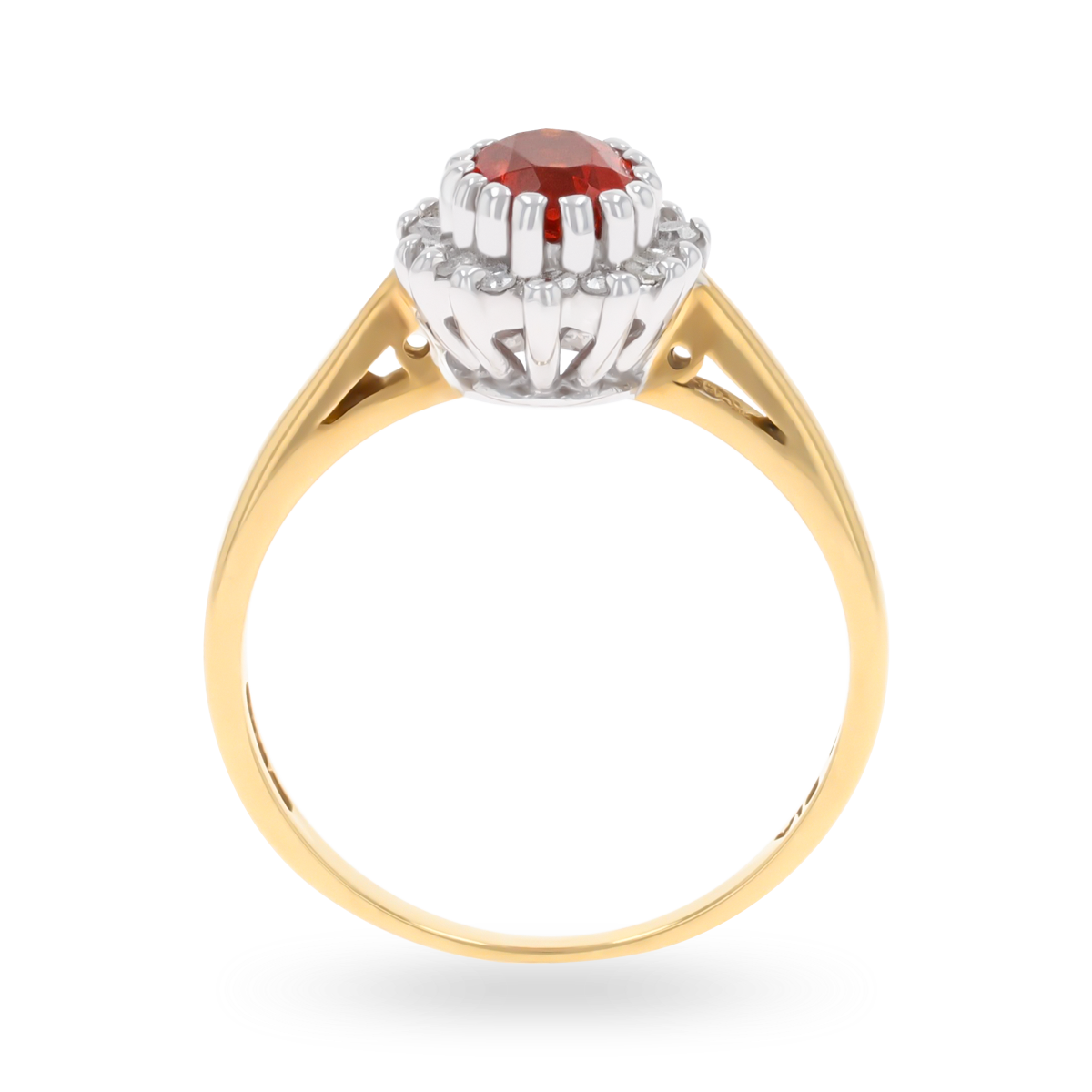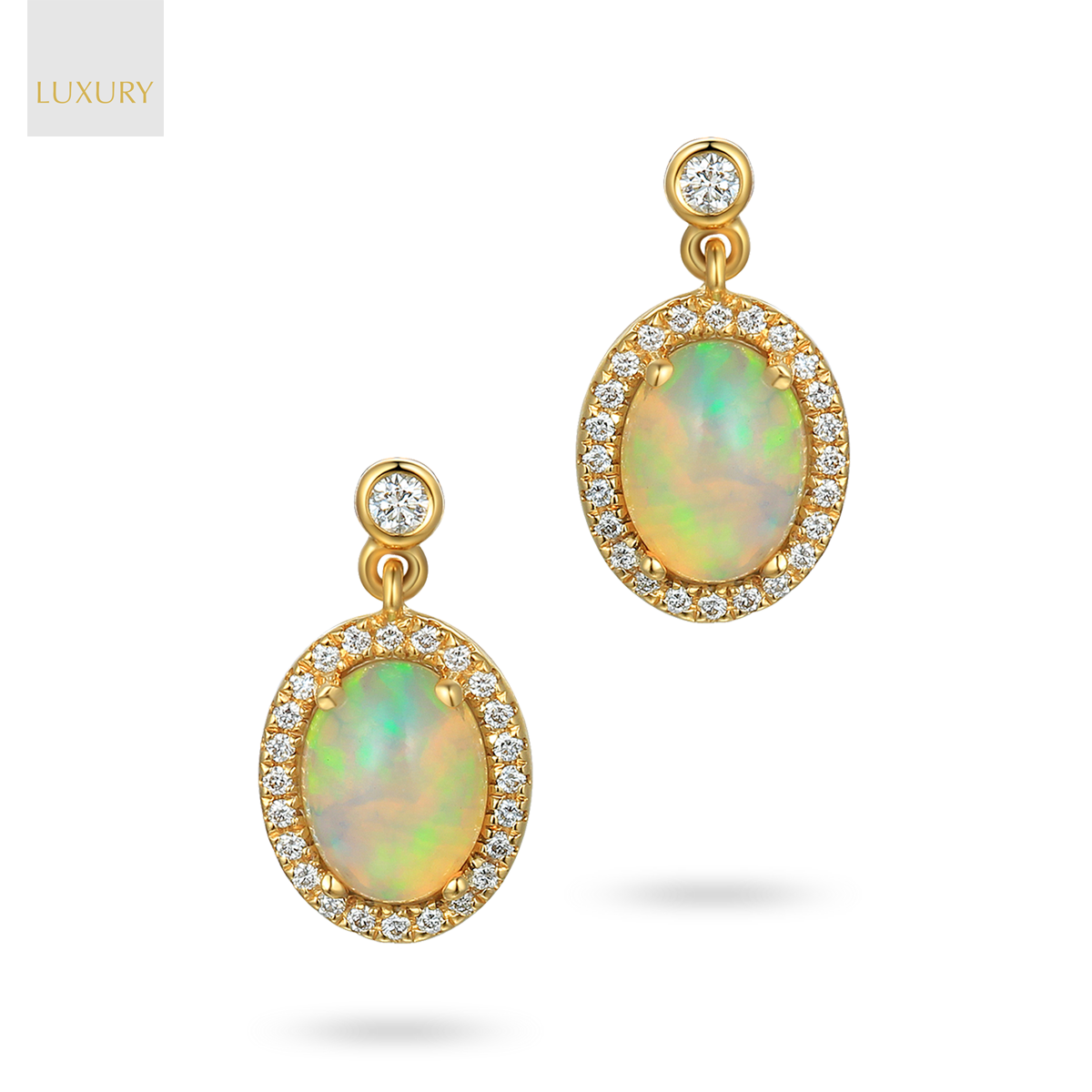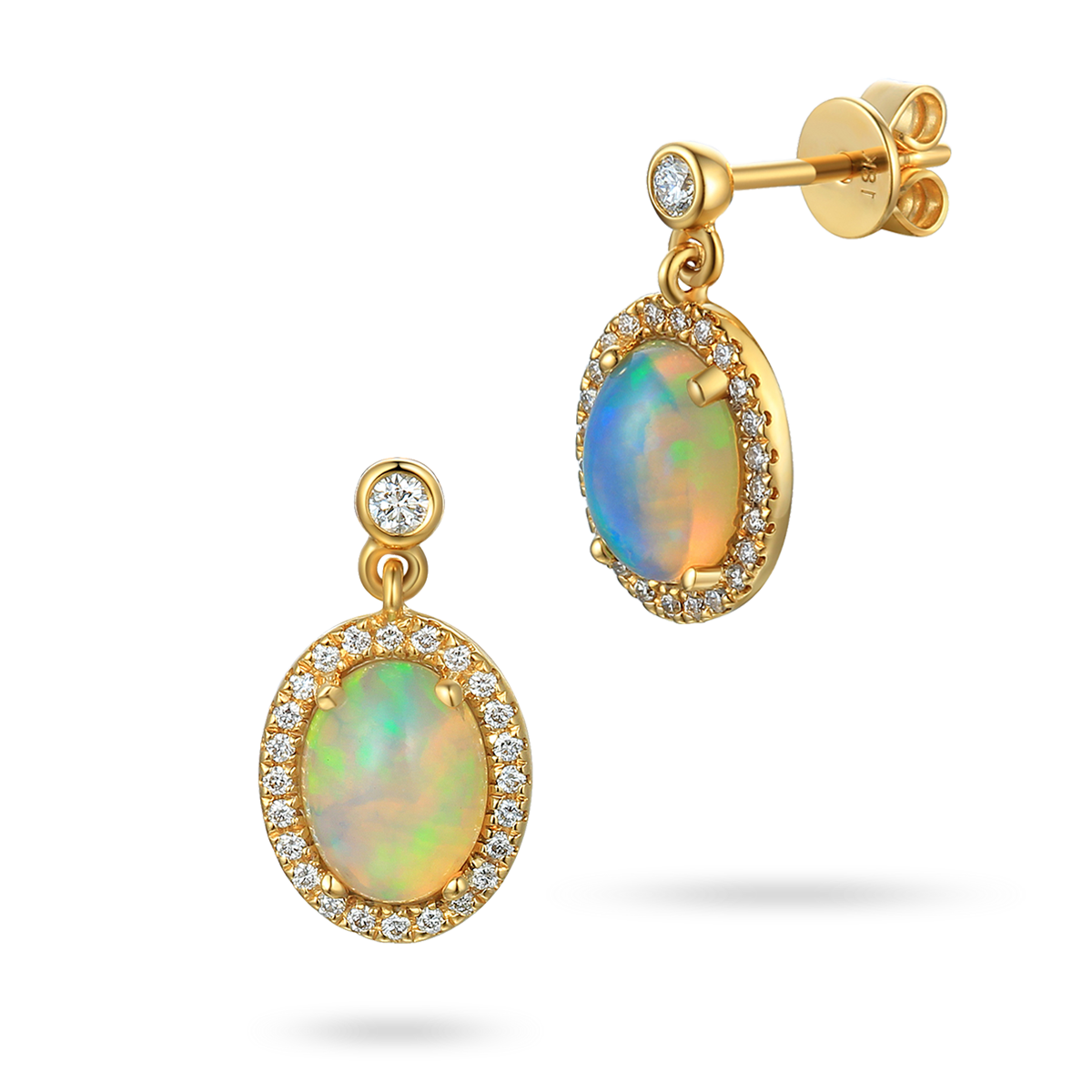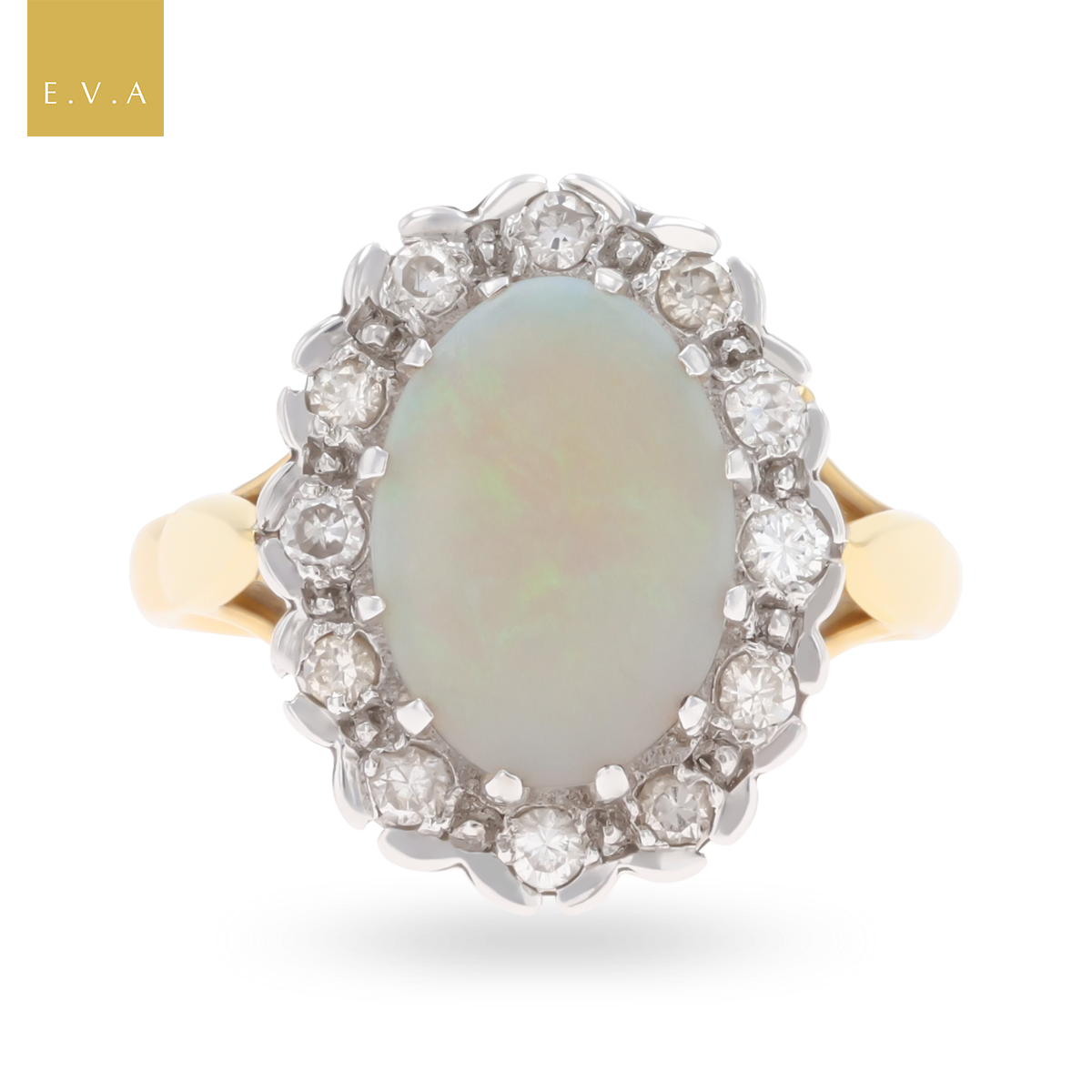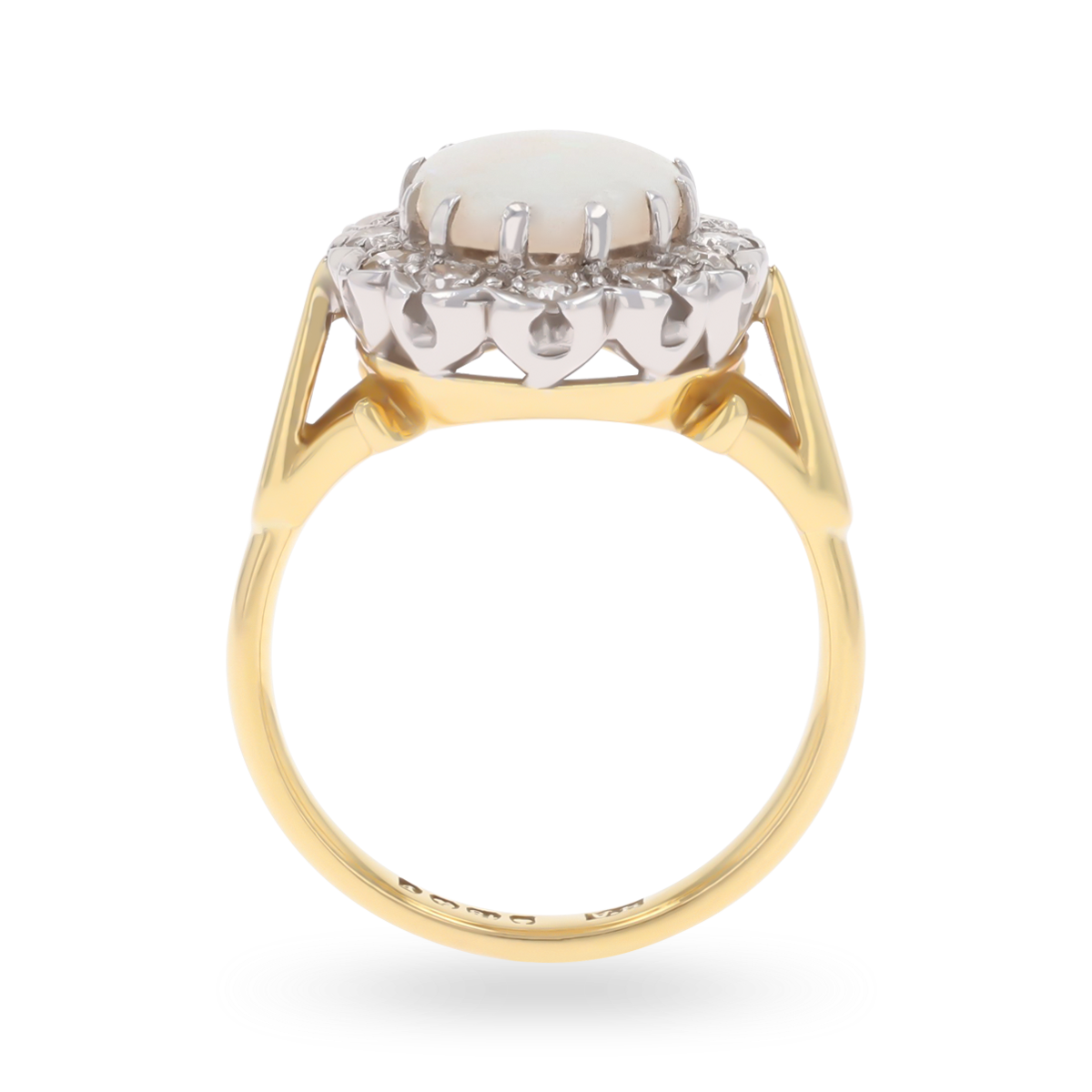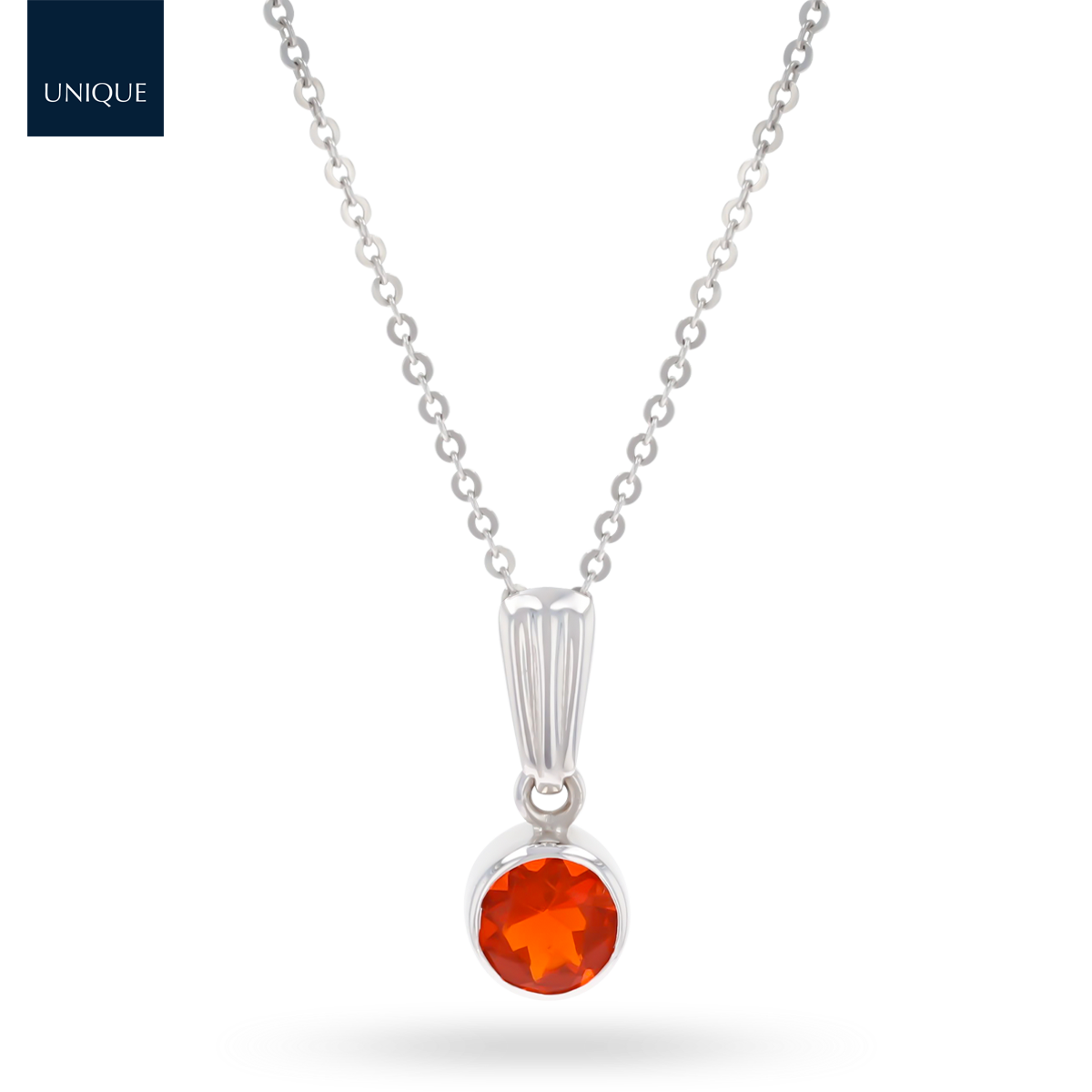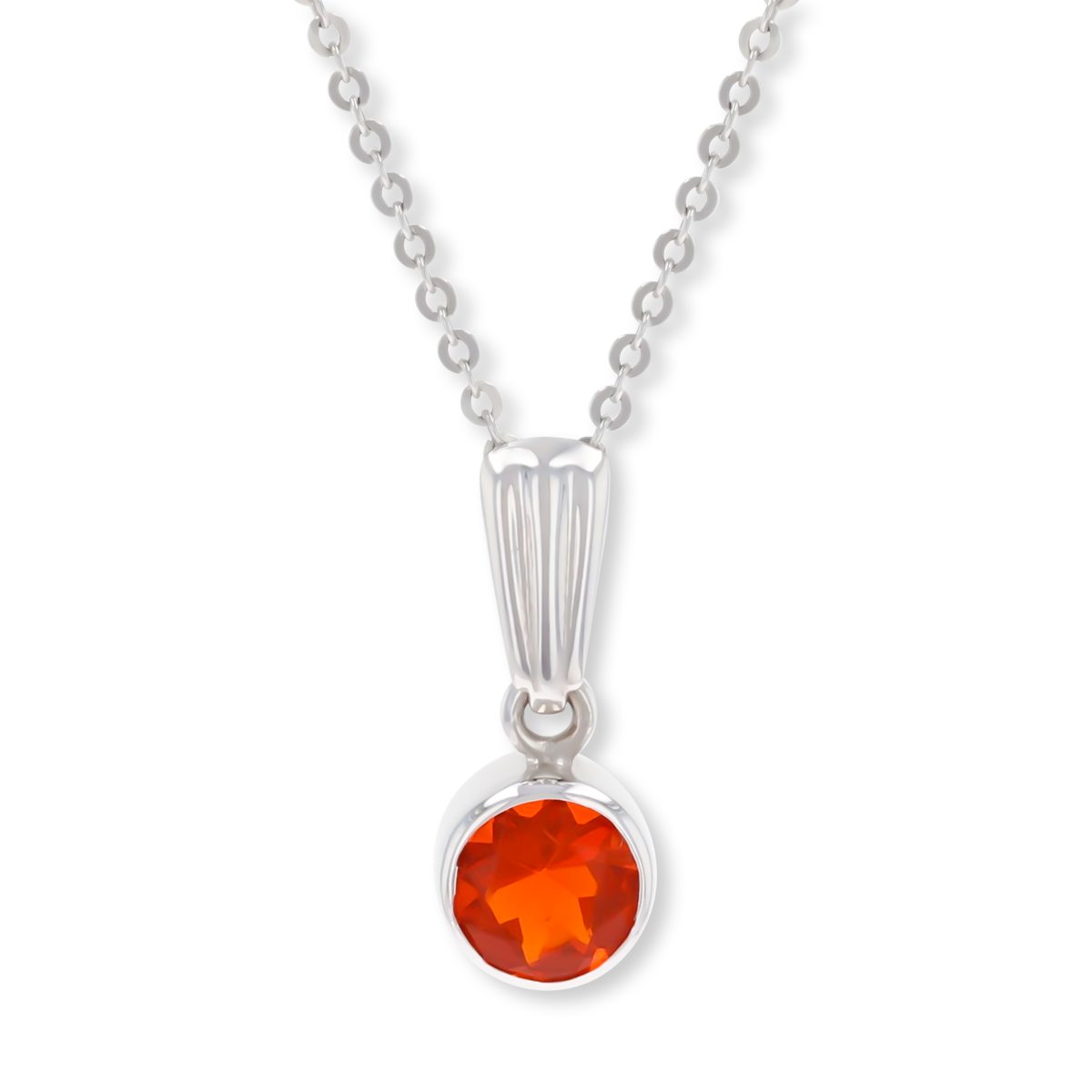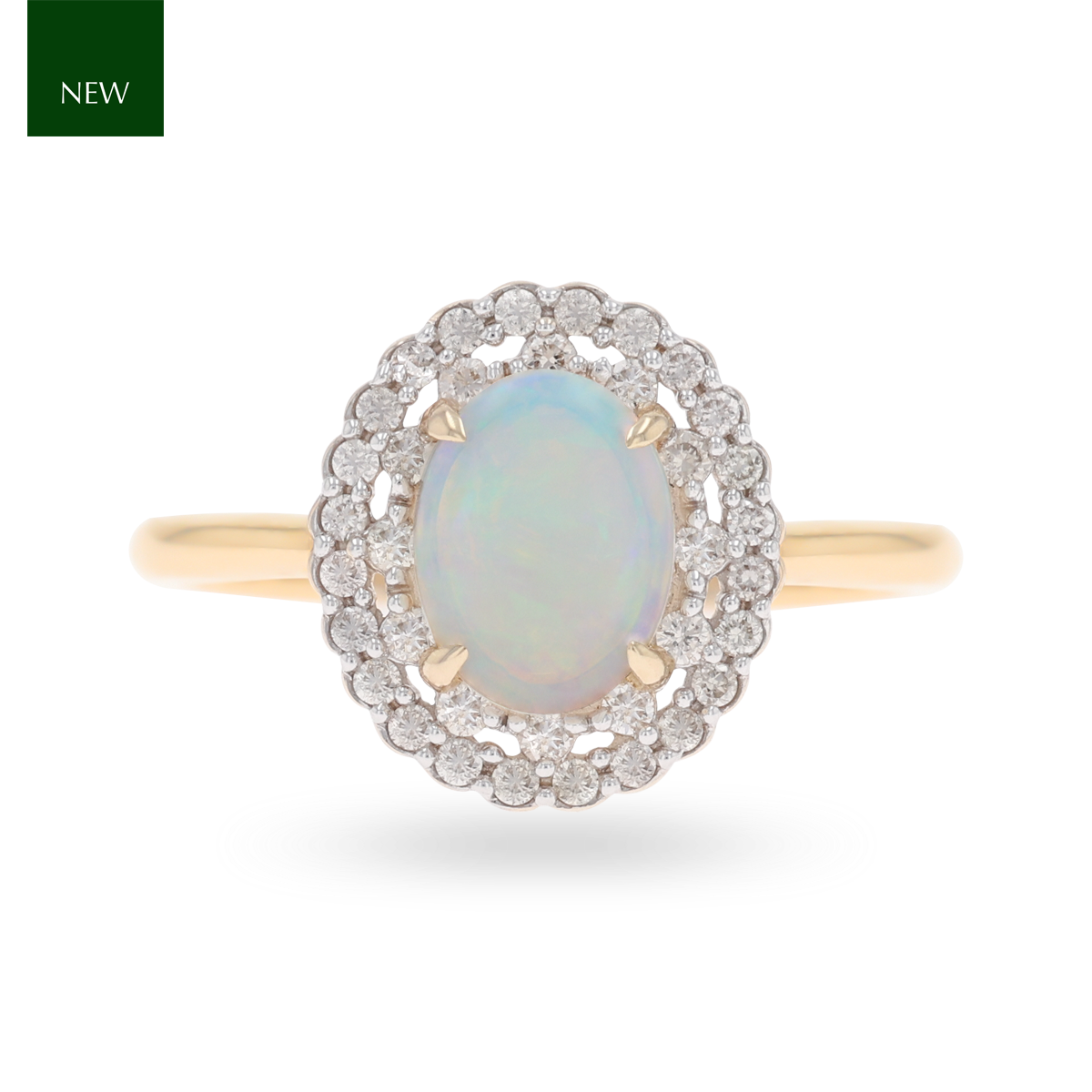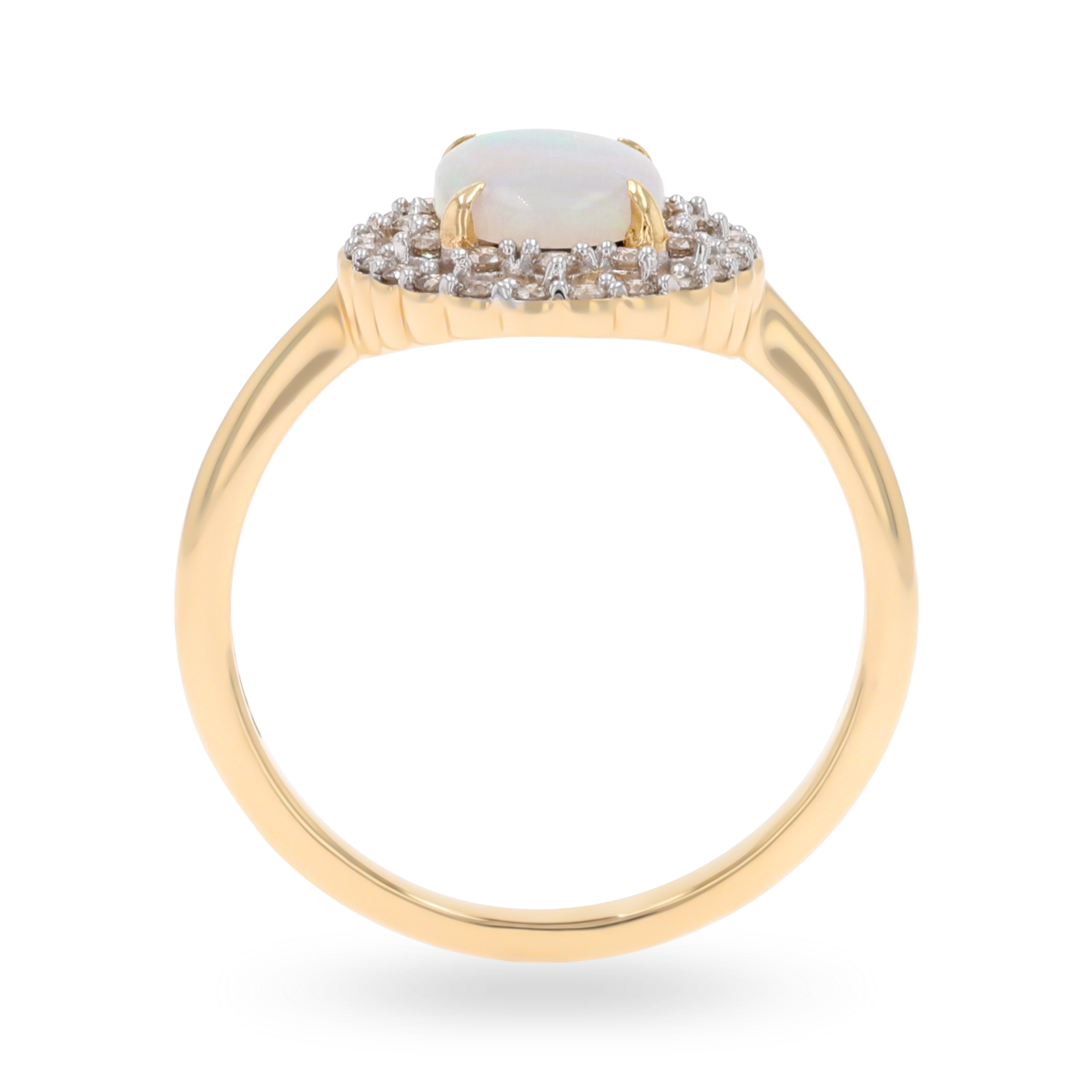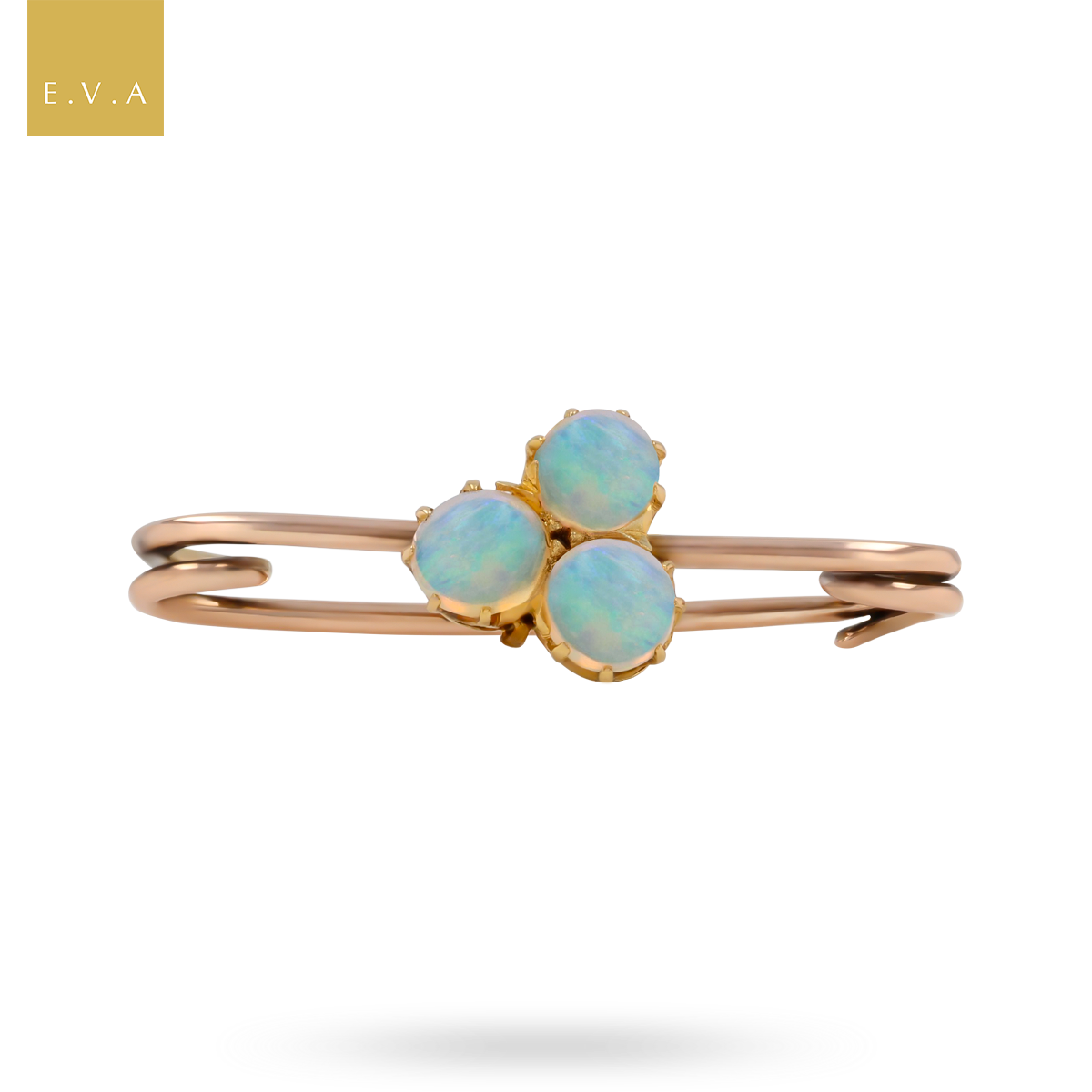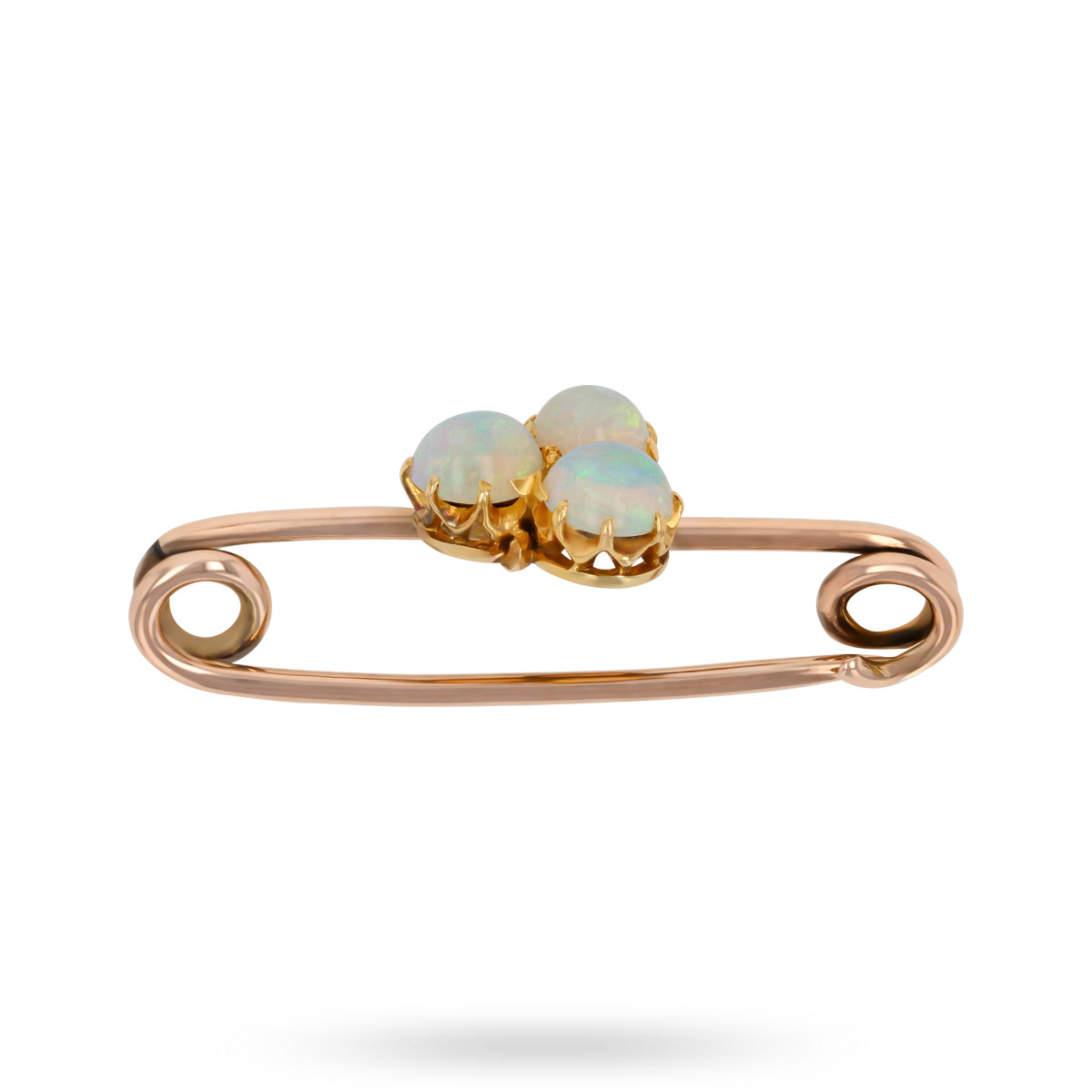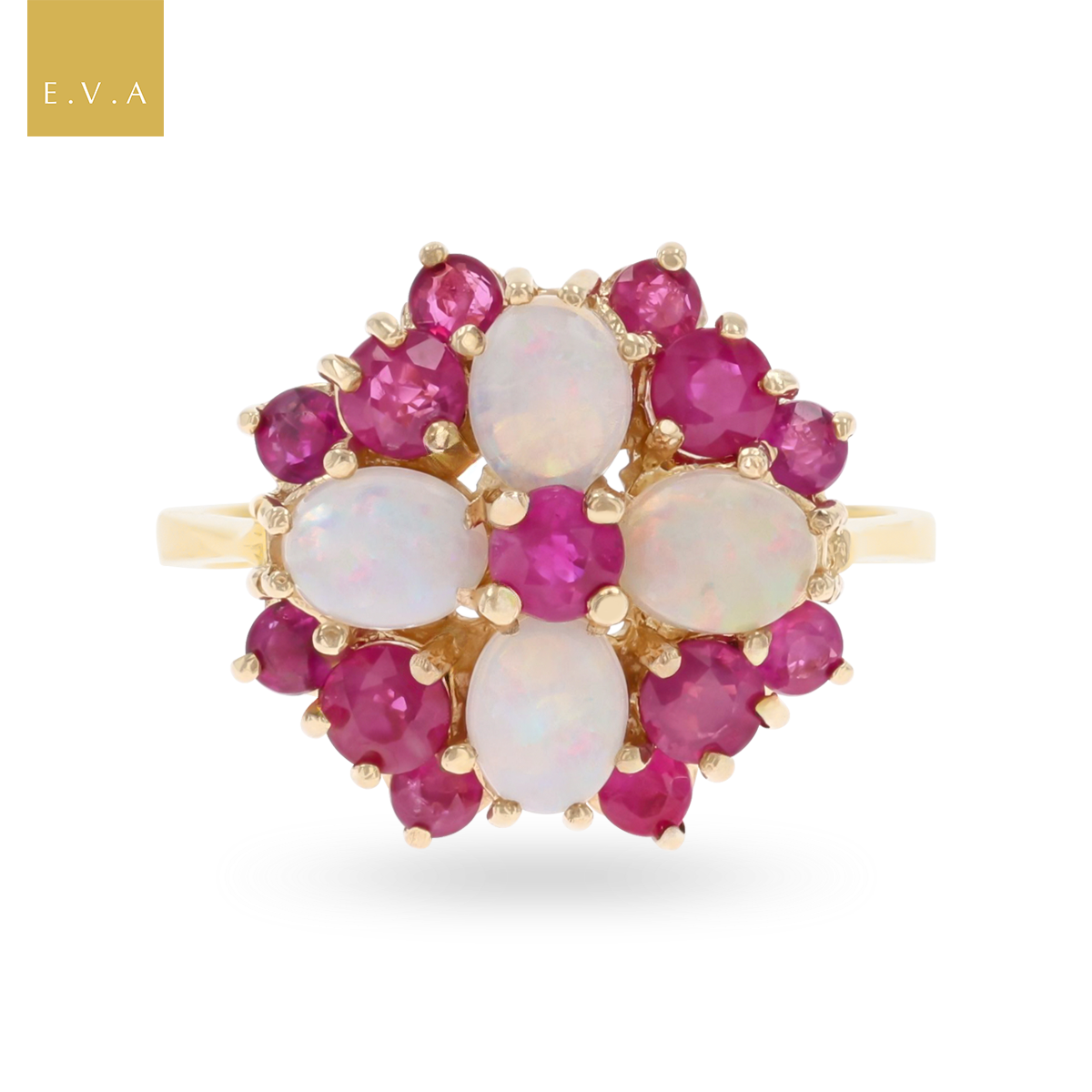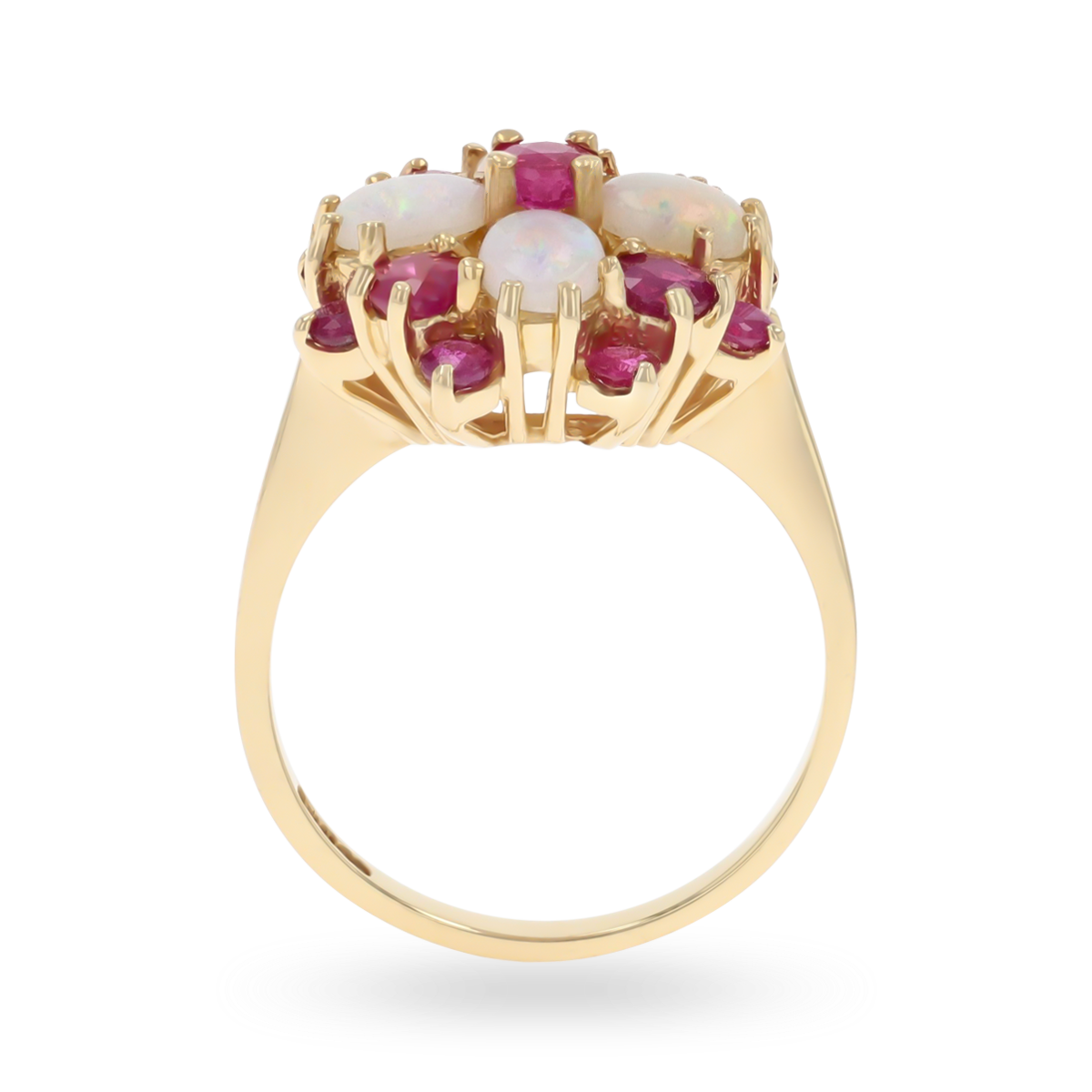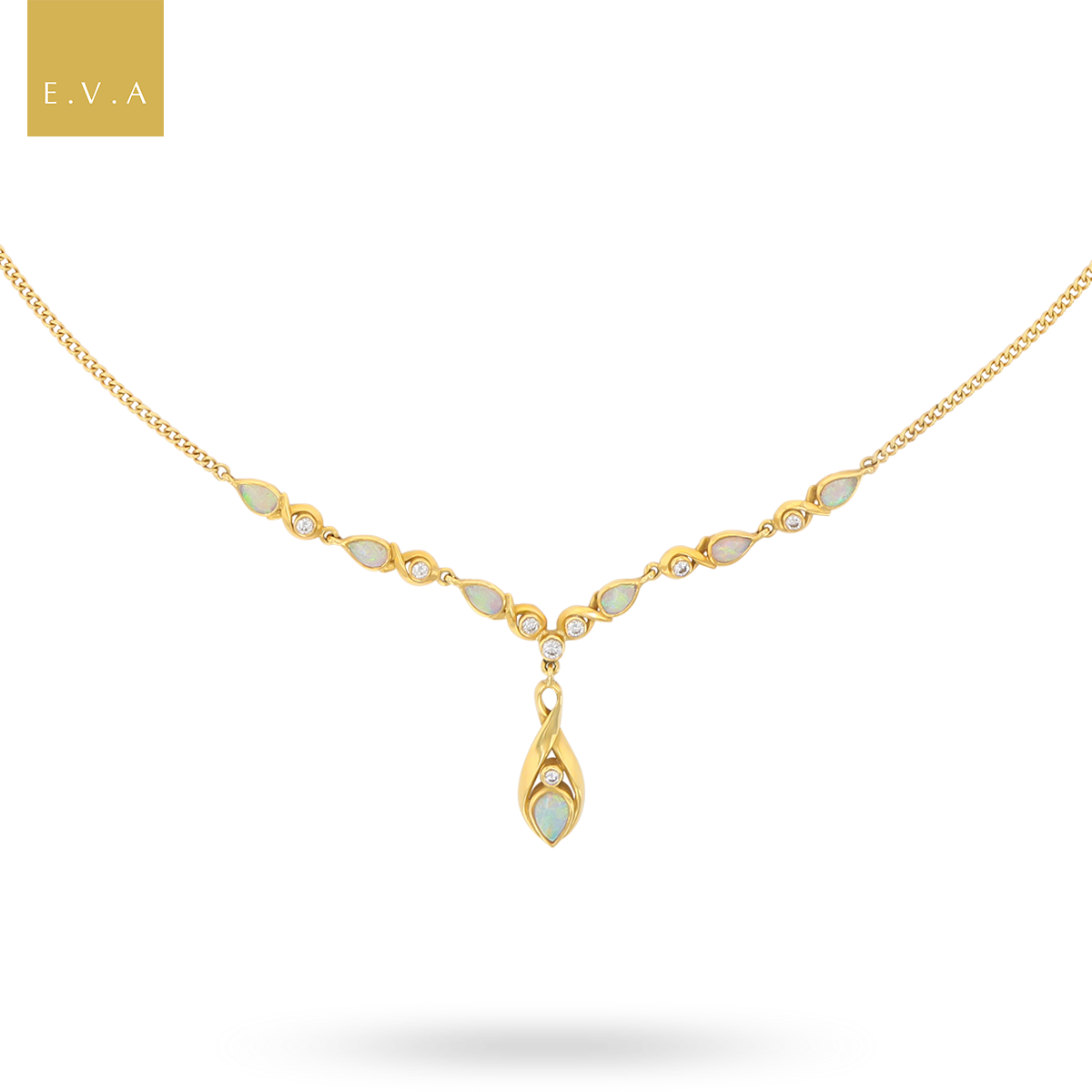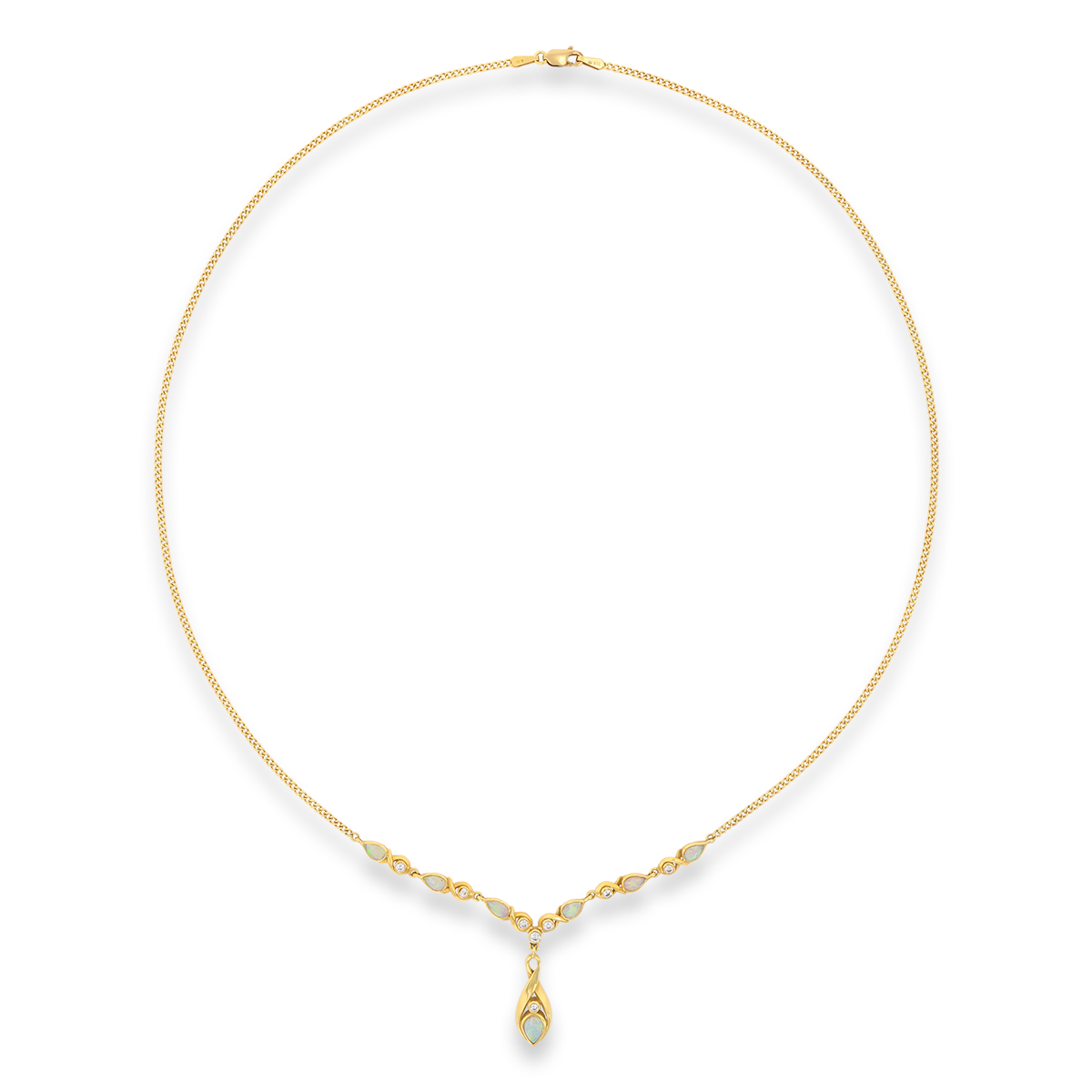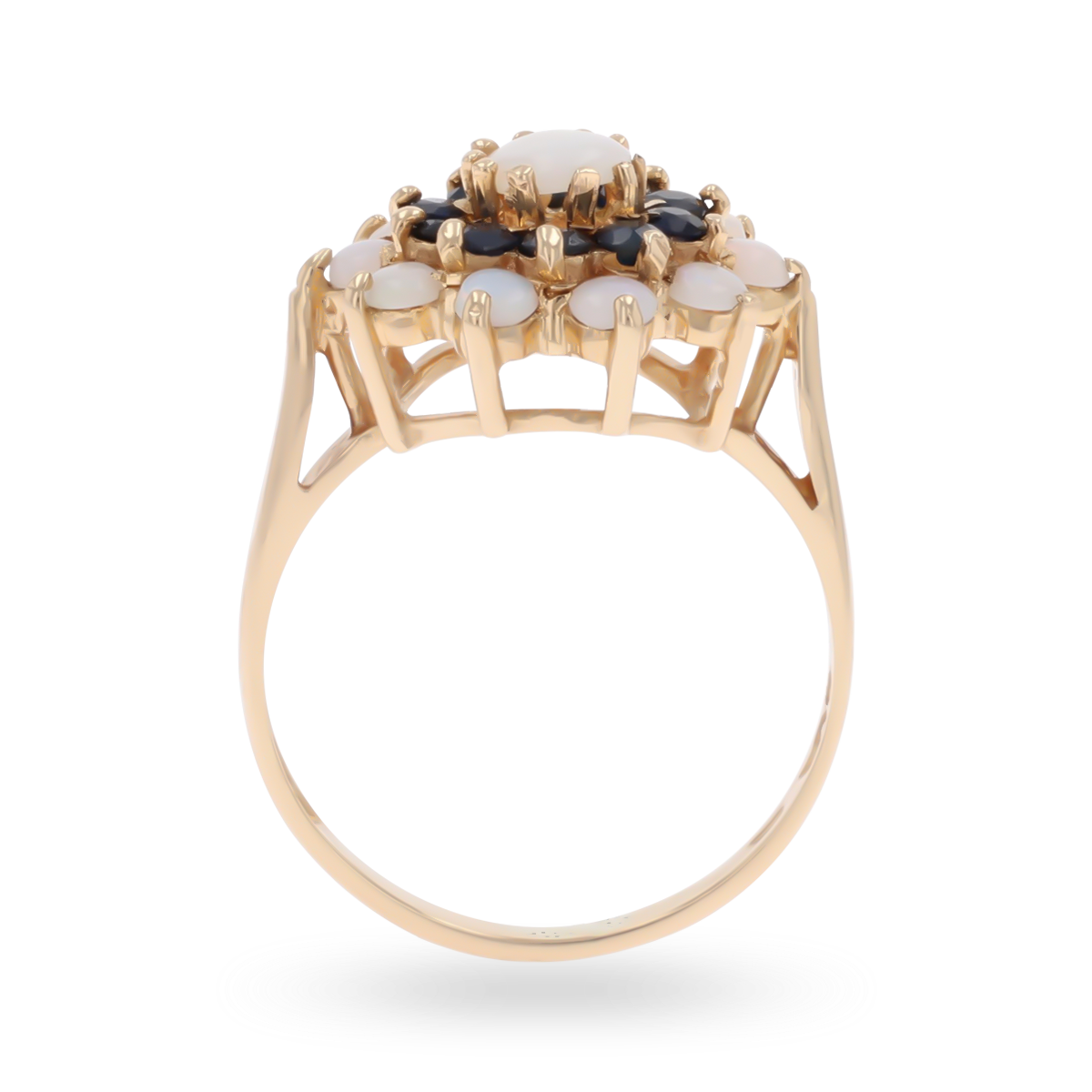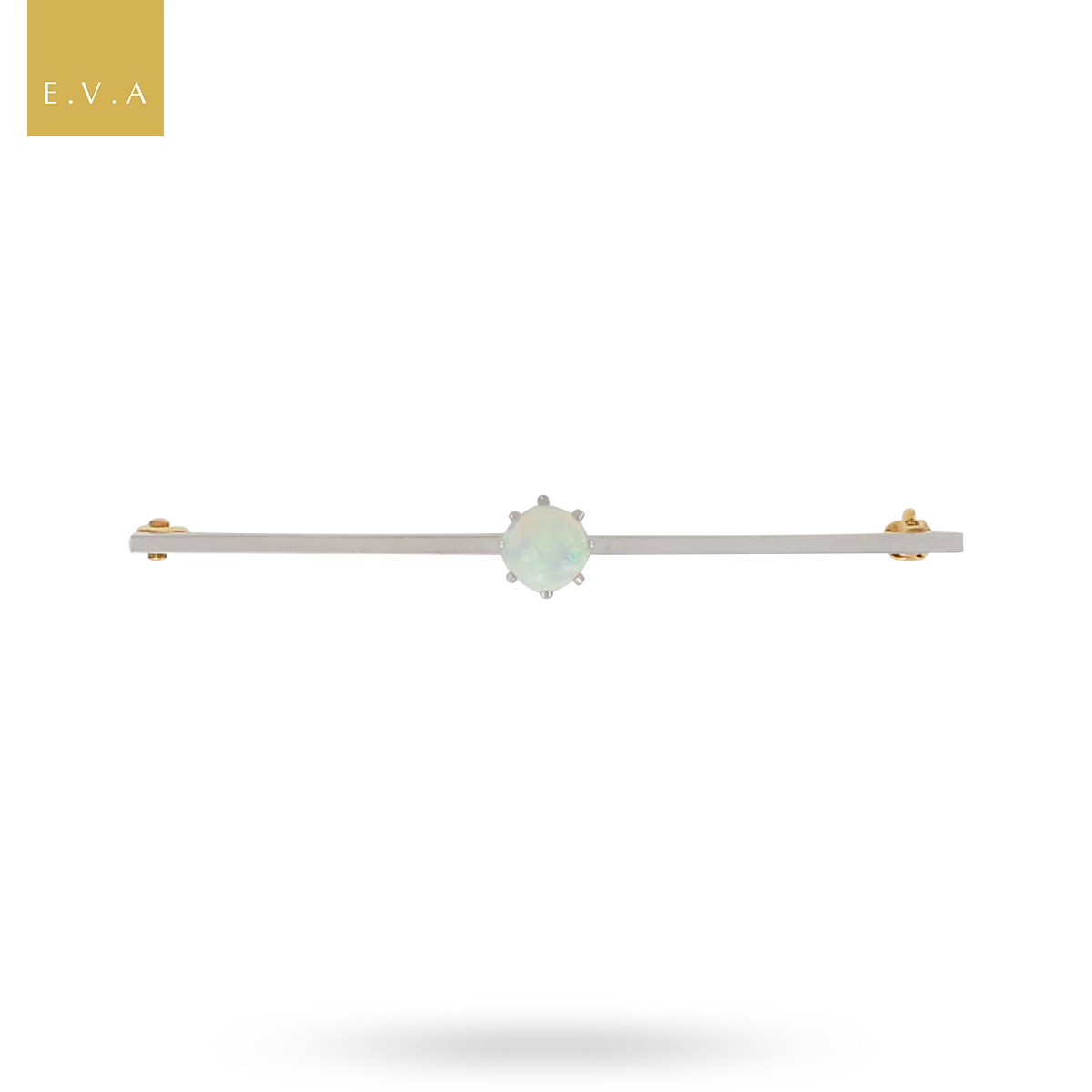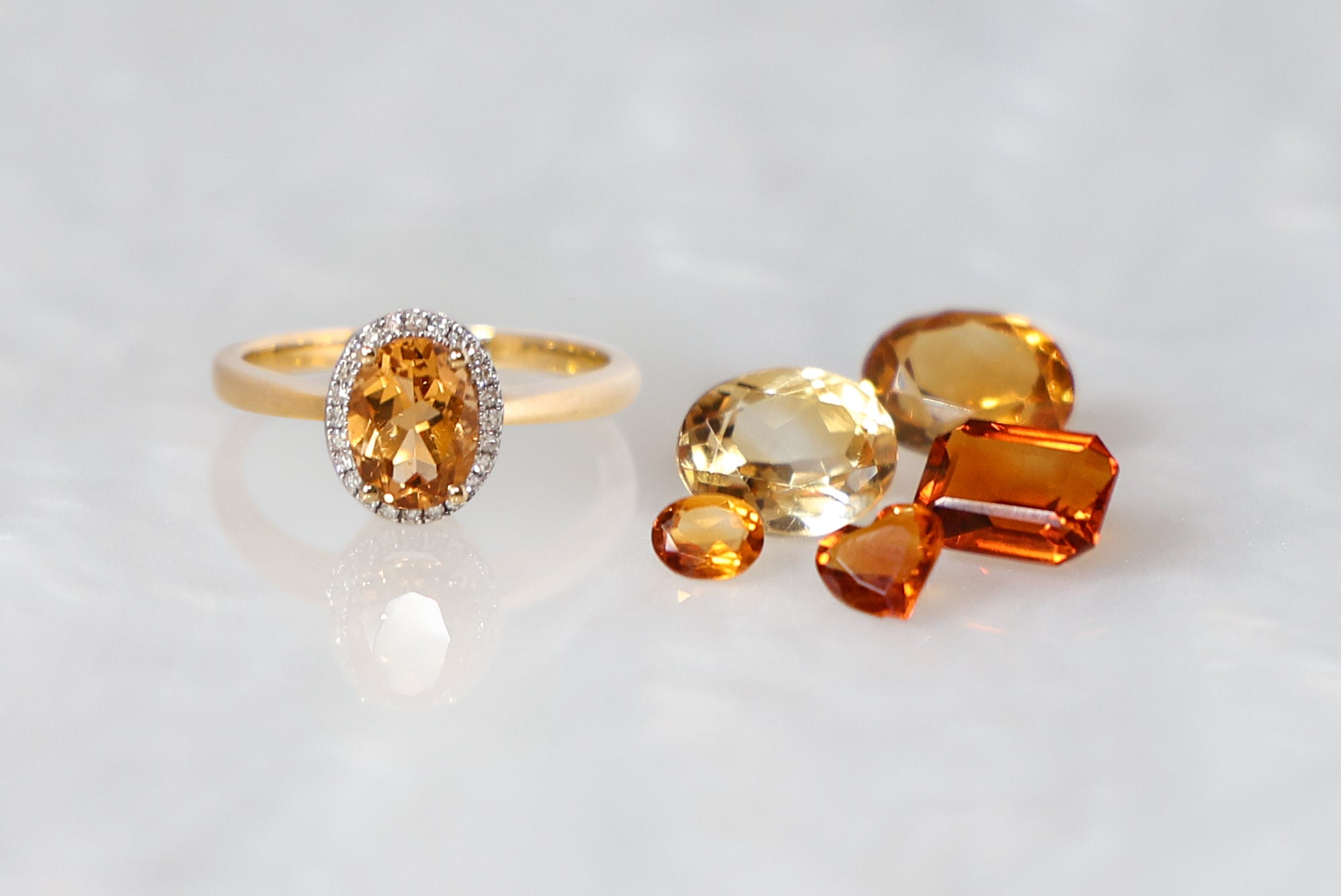The Artist’s Gemstone
What is Opal?
Opal, is a non-crystalline amorphous material and has a composition of silica with up to 10% of water. Opals can be classified into three main types: precious opal, fire opal and common opal. Depending on the variety of opal, the gemstone ranges from transparent to opaque and reflects a dull vitreous to resinous lustre.
Precious Opal
Precious opal possess the optical effect known as ‘Play of Colour’. The iridescence of red, orange, yellow, green, blue and violet flashes, is due to a combination of diffraction and interference of light. The play of colour is observed on a pale or dark colour background and this is generally described as ‘white’ or ‘black opal’. Moreover, white opals also exhibit the magical phenomenon termed ‘Opalescence’. The translucent, pearly white appearance, resembles the sky on a cloudy day. Not many people know, that the cause of a cloudy sky and white opals are similarly linked. The effect merely relies on large particles scattering light.
Other varieties of precious opal include: boulder, matrix, water and hydrophane.
- Boulder Opal, occurs as thin seams of precious opal, which is naturally attached to a brownish material (host rock). The opal is too thin to be cut, without retaining the brownish matrix as a backing and therefore creates a natural opal doublet.
- Matrix Opal, is a single piece of opal, which is diffused as fillings of pores or holes between grains of the host rock.
- Water Opal, displays play of colour on a near transparent, colourless or pale yellow background.
- Hydrophane Opal, is a light coloured opaque stone, that reveals a translucency and play of colour, only when immersed in water.

9ct Yellow Gold Water Opal Bezel Set Solitaire Ring
Fire Opal
Fire opal flaunts an intense orange, to reddish orange body colour and occasionally occurs with a brownish yellow hue. The gemstone is transparent to translucent and sometimes may exhibit play of colour. Unlike other opal varieties, fire opal can be fashioned as a facetted stone, as well as a cabochon.

9ct Yellow Gold Fire Opal & Diamond Cluster Ring
Common Opal
Common opals are translucent to opaque and do not display play of colour. They can be split into four different varieties: cat’s eye opal, coloured opal, dendritic opal and wood opal.- Cats’s eye opals, can occur in green, pale yellow or dark brown colours and displays the optical phenomenon of Chatoyancy.
- Coloured opals, have an attractive greyish blue, pink, green and yellow body colour.
- Dendritic opals, display dark fern-like or moss-like inclusions.
- Wood opals, form when fossilised wood is replaced by opal and this can be found in parts of the USA.

9ct Yellow Gold Oval Opal & Diamond Cluster Ring
Localities of Opal
Different varieties of opals can be sourced and mined from different localities. Precious opals can be extracted from: Australia, Brazil, Canada, Germany, Ethiopia, Honduras, Hungary, Indonesia, Mexico, Spain & USA. Fire opals can be sourced from Brazil, Canada and Oregon, USA. Common opals can be mined from South America, South Africa, USA & Zimbabwe. Cat’s eye opals can be located from Brazil and Tanzania.
Black opals are considered to be the most highly valued variety, as a result of their rarity, deep coloured background and vibrant play of colour. The prized black opals, are mainly sourced from the Lightning Ridge mine in New South Wales, Australia.

9ct Yellow Gold Amethyst & Opal Five Stone Ring
Composite Opals
A composite gemstone, is artificially made up of two or more different parts, to give the impression of a single stone. There are two types of composite opals: opal doublets and opal triplets. Natural opal doublets can be fashioned, from the aforementioned variety of boulder opals, whereby the opal is cut to retain the brown matrix as a backing. However, this can be imitated by cementing a slice of opal to a base material, artificially creating an opal doublet. An opal triplet, includes an extra dome-shaped transparent layer, which is cemented above the slice of opal, resulting in a cabochon cut stone. The extra layer protects the thin slice of opal and magnifies the play of colour.

9ct Yellow Gold Opal & Diamond Double Halo Stud Earrings
Treatments
Surface reaching fractures can be infilled, with silicon sealants or a polymer resin, to visually reduce the appearance of cracks and improve the durability of the the overall stone.
White opals can be stained black, by saturating in a sugar solution. The carbon present in the sugar, remains as black deposits in the cracks of opal.

18ct Yellow Gold Oval Shaped Opal & Diamond Cluster Ring
Simulants
Gilson ‘synthetic’ opals are a simulant of natural opals. The artificially man-made material, only imitates the gemstones play of colour and does not chemically, physically or geologically have the same properties of natural opal. Composite opals made with this material, must be disclosed as synthetic opal composites. Observation of the play of colour under a 10x loupe and microscope, will identify the difference between natural opals and Gilson ‘synthetic’ opals.
Opals can commonly be mistaken for plastic, glass, opal doublets and opal triplets. These can all be identified through the use of gemological testing and observations.

9ct Yellow Gold Oval Shaped Opal Solitaire Pendant
The Lore of Opal
Opal is the material used to celebrate the 14th wedding anniversary, as well as being the birthstone of October, it is also the zodiac birthstone of Libra. Opal derives from the Latin word ‘opalus’, which translates to ‘see a change in colour’. The romans believed Opal to be a beautiful combination of all the other precious gemstones. Another interpretation in ancient India, considered the opal to be the embodiment of ‘Goddess of the Rainbow’. In recent years, the gemstone has been carved out to symbolise hope and honesty, whilst white opals have been associated with purity and nurturing.

9ct Yellow Gold Opal & Diamond Flower Cluster Ring
Care
💎 Hardness: 6 | 💪 Toughness: Poor to Fair | ⚖️ Stability: Fair to Poor
♥️ Extreme Caution, ⚠️ Avoid: 🔨 Pressure / Knocks, 💈 Hair Sprays, 🧴 Lotions / Perfumes, 💄 Make-Up, 💦 Solvents (💅 Nail Polish Remover), 🧪 Acids / Detergents / Chemicals, 💡 Light, ☀️🔥 Heat, 🔥❄️ Thermal Shock / Extreme Temperature Change, 💧 Porosity, 🫧 Jewellery Dips, 🔊 Ultrasonic, 🌪 Steam Cleaners.
🔬 Gemmological Observation: Clean only by wiping with a damp/dry cloth. Do not soak in jewellery cleaners. Opal is a very soft material and should be treated with care, avoid wearing whilst doing anything that can cause abrasion. Avoid dry/hot storage conditions or leaving them in direct sunlight. Ideally store with moist cotton balls/a dish of distilled water, to avoid dehydration and prevent cracking and crazing. Wearing opals will provide them with the moisture they need.

Explore our Wordfinder, A Glossary of Terms, to discover the meaning behind unknown names, terms or phrases - used in this article.
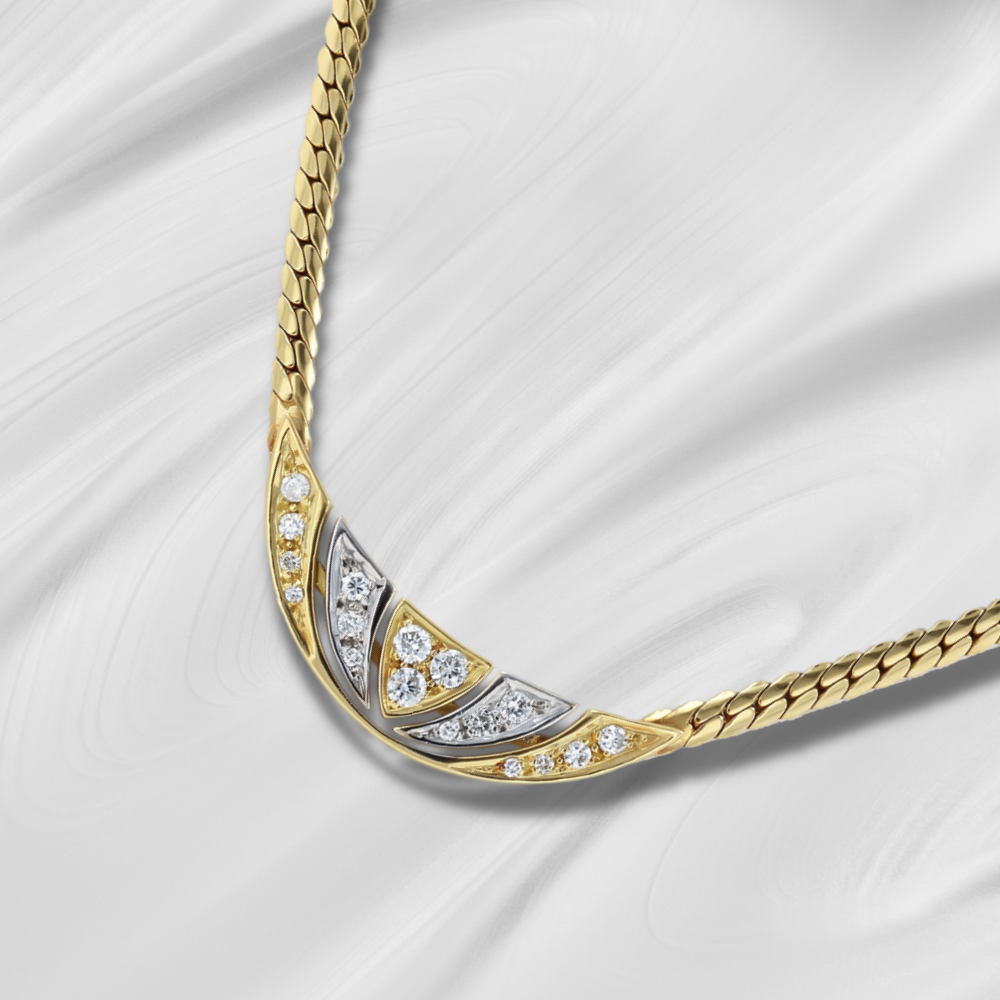
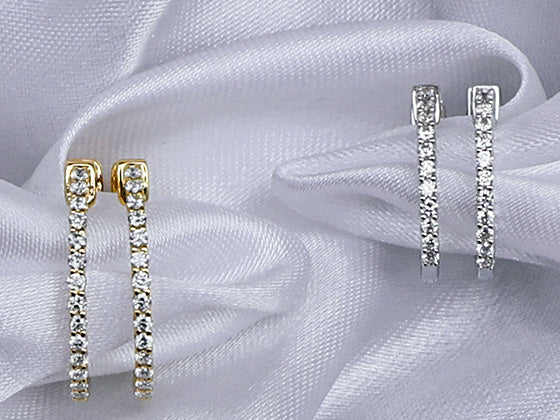
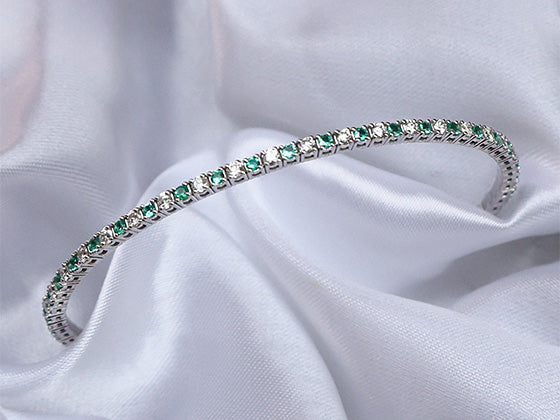

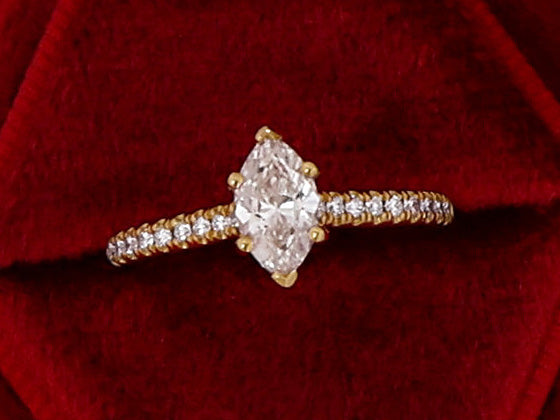
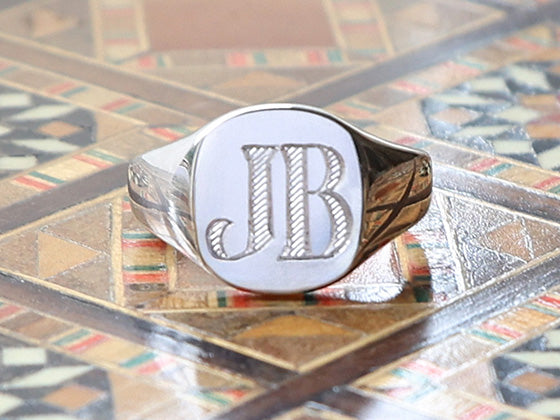
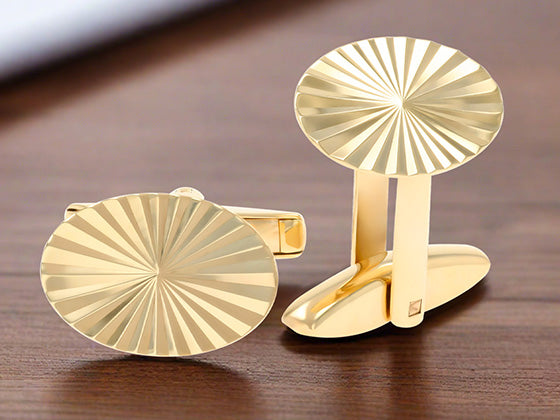
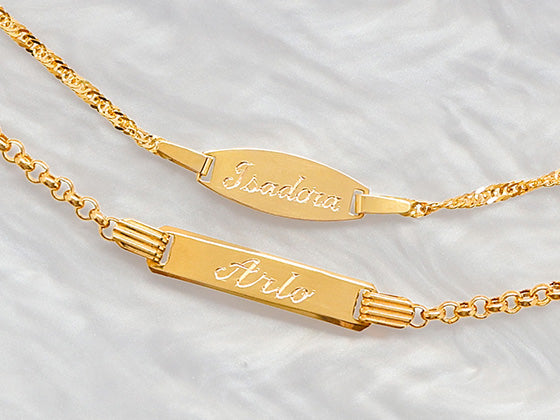
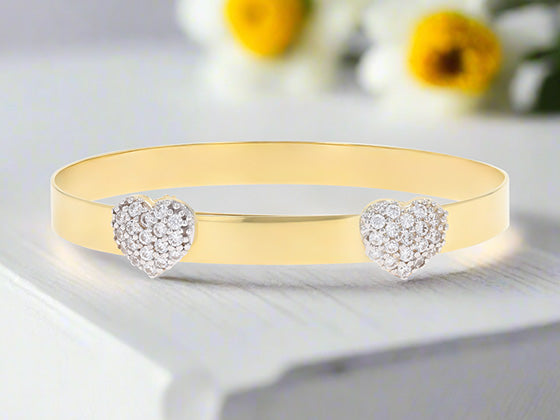
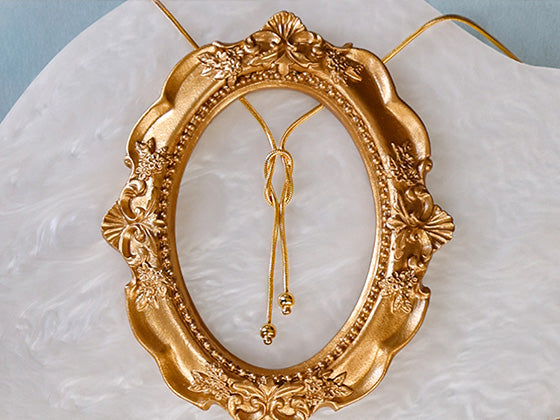
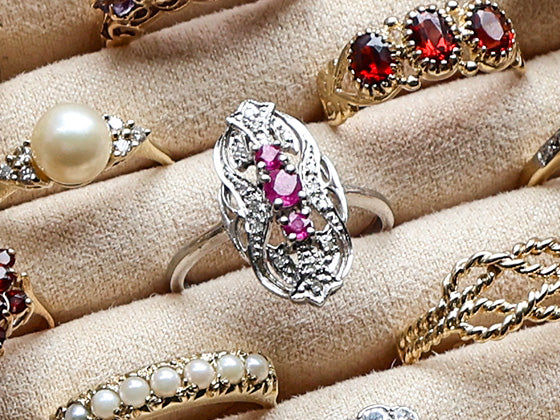
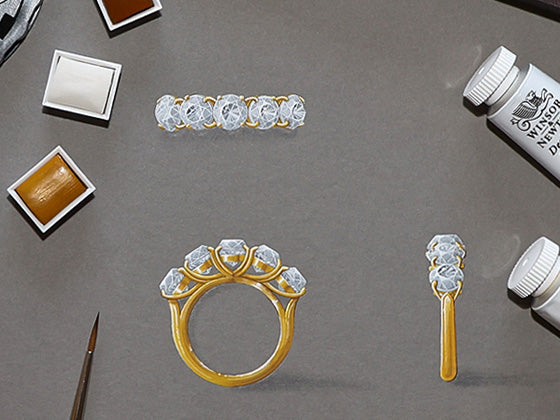
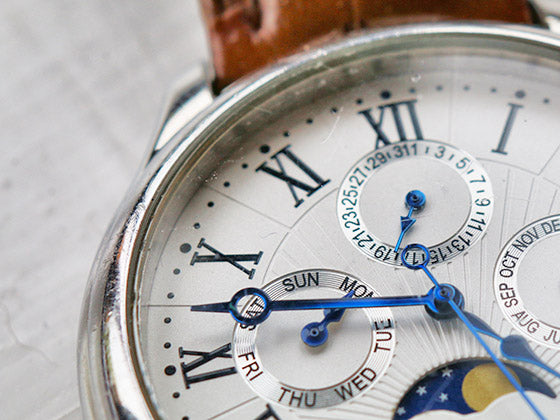
 Contact Us
Contact Us

